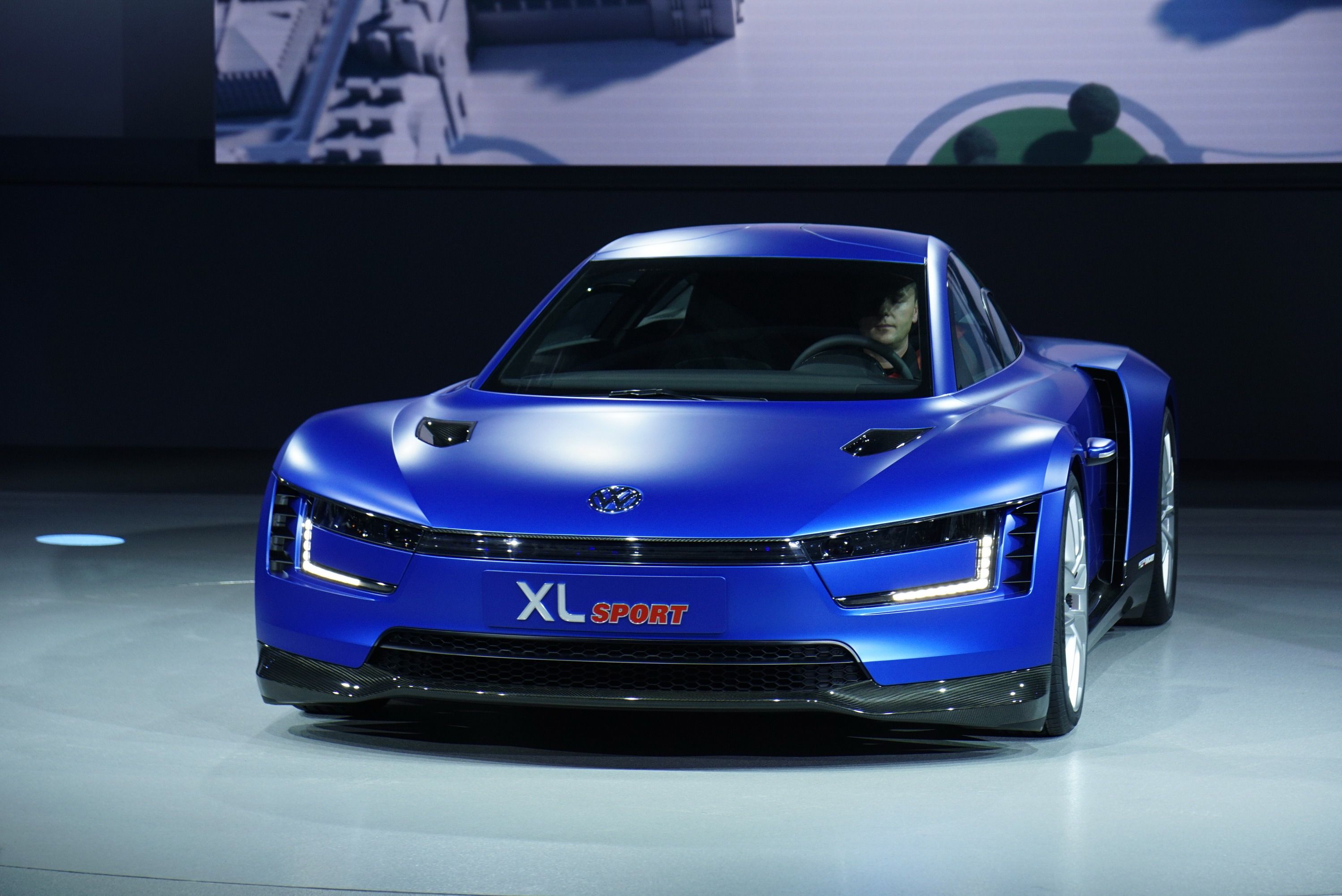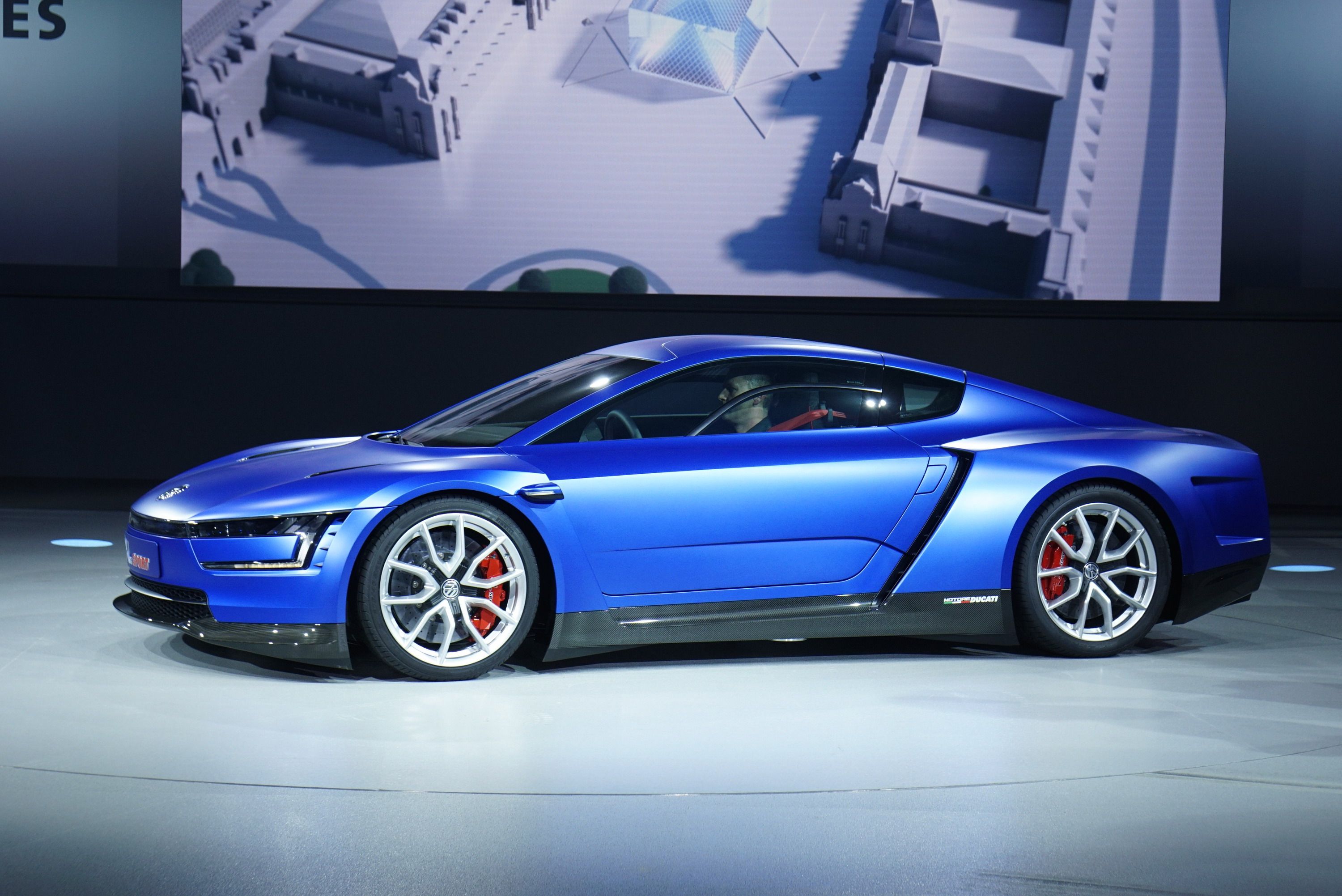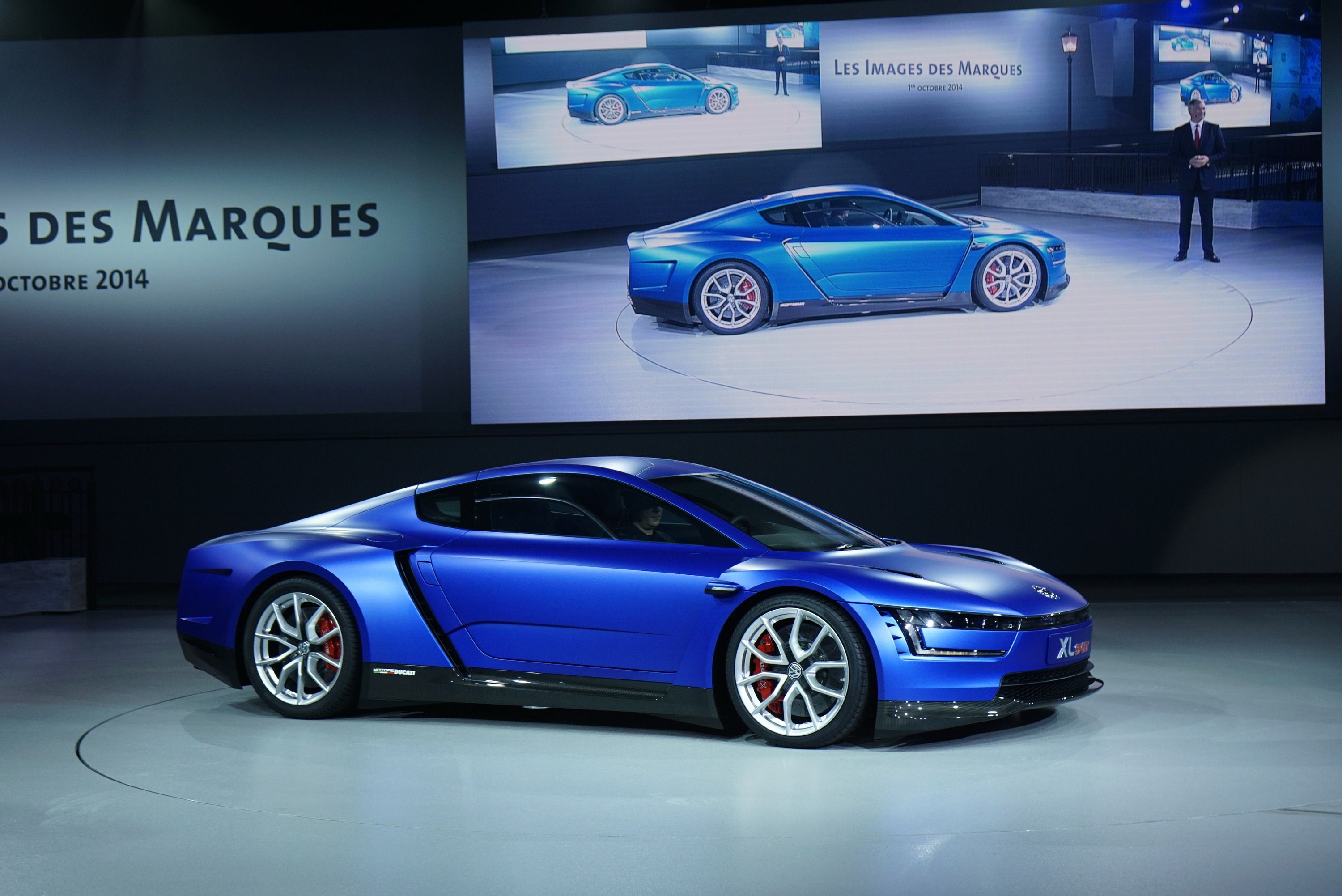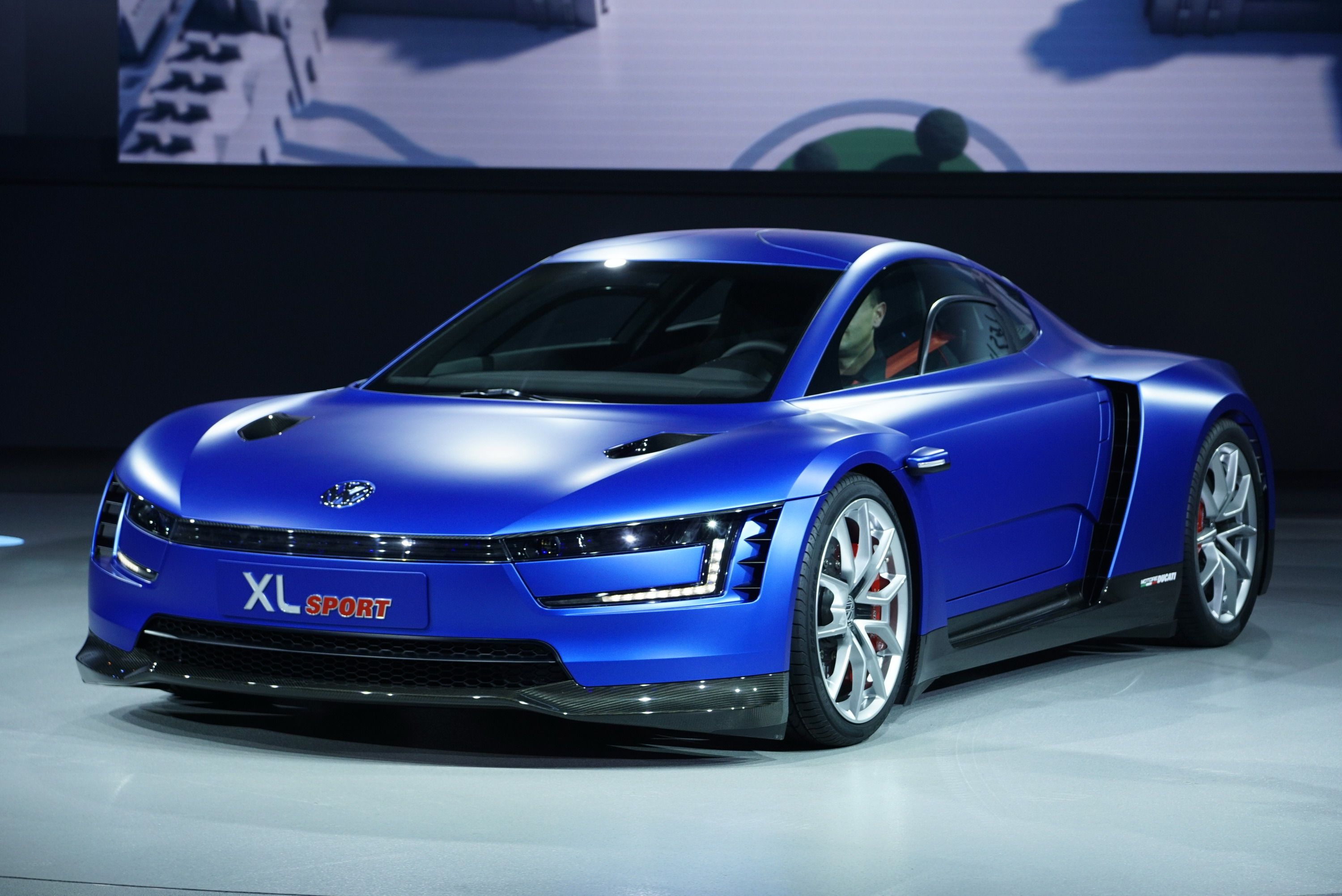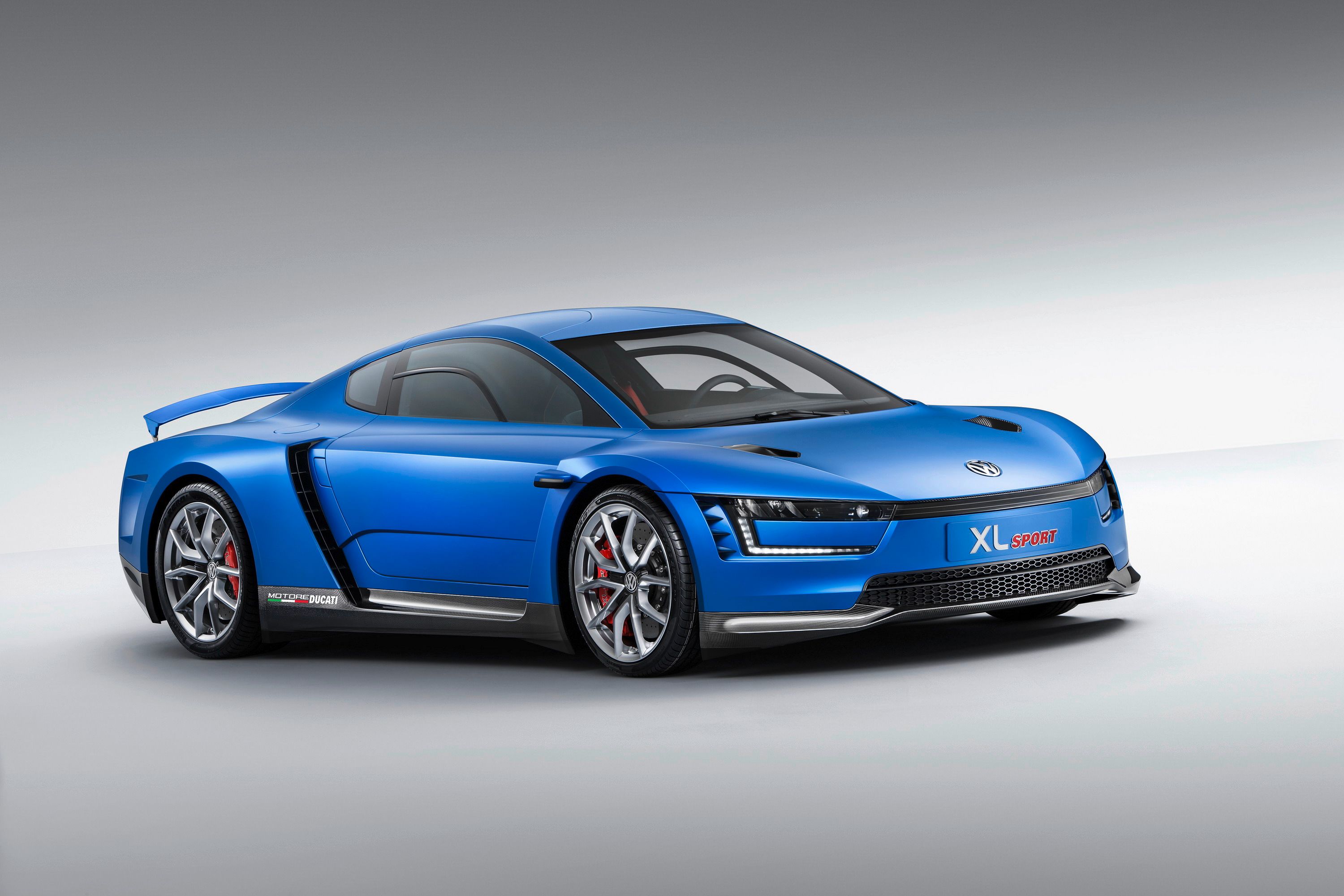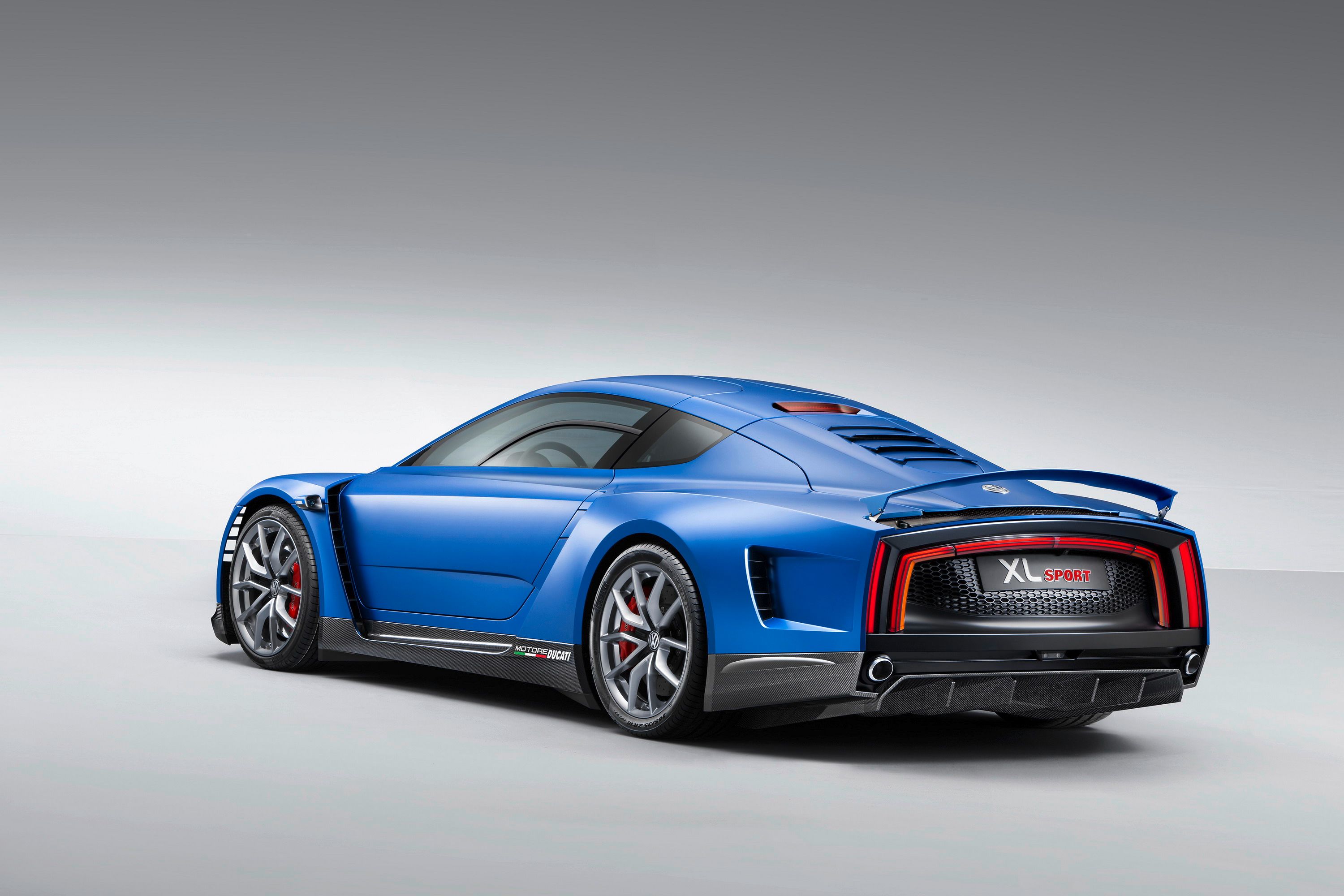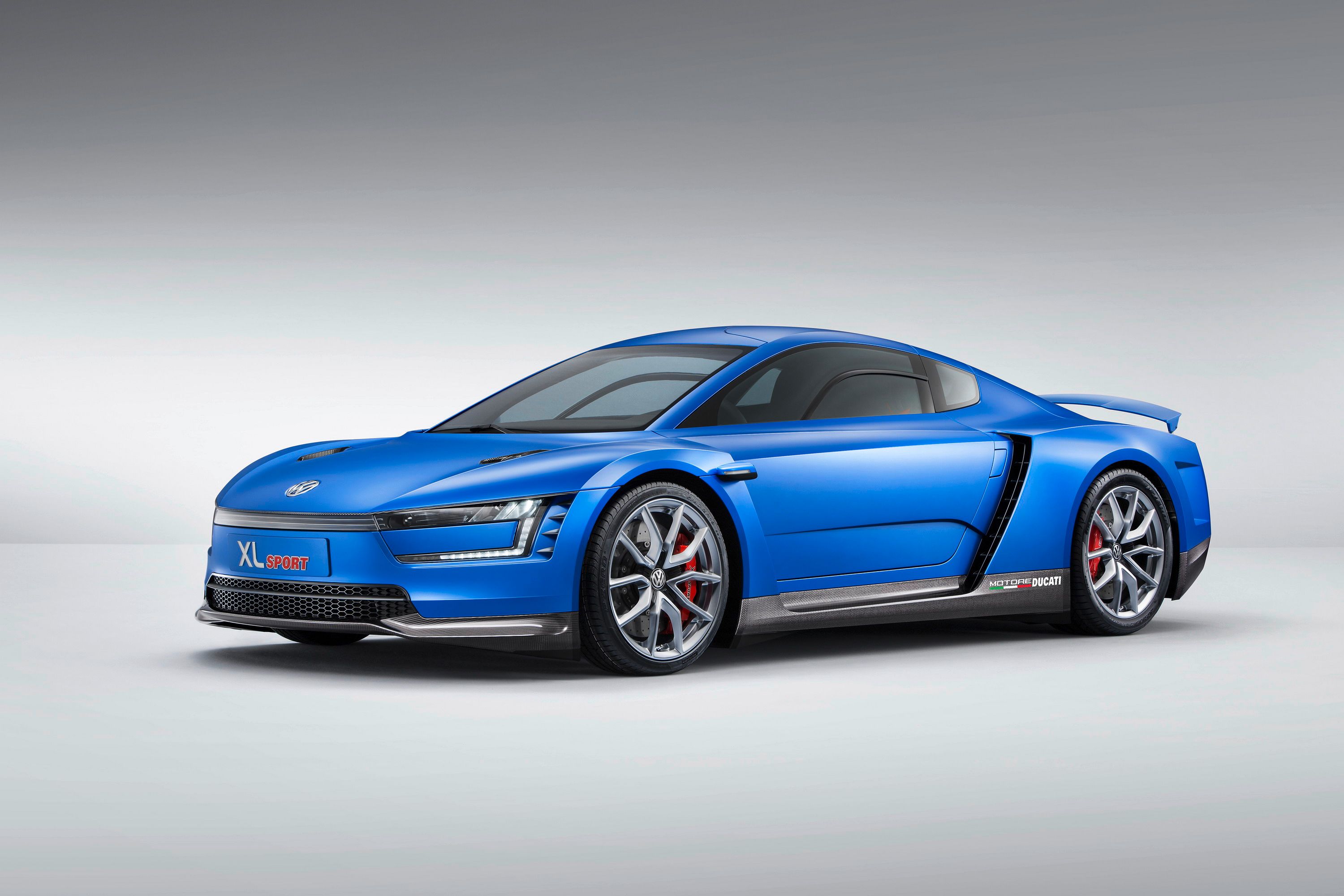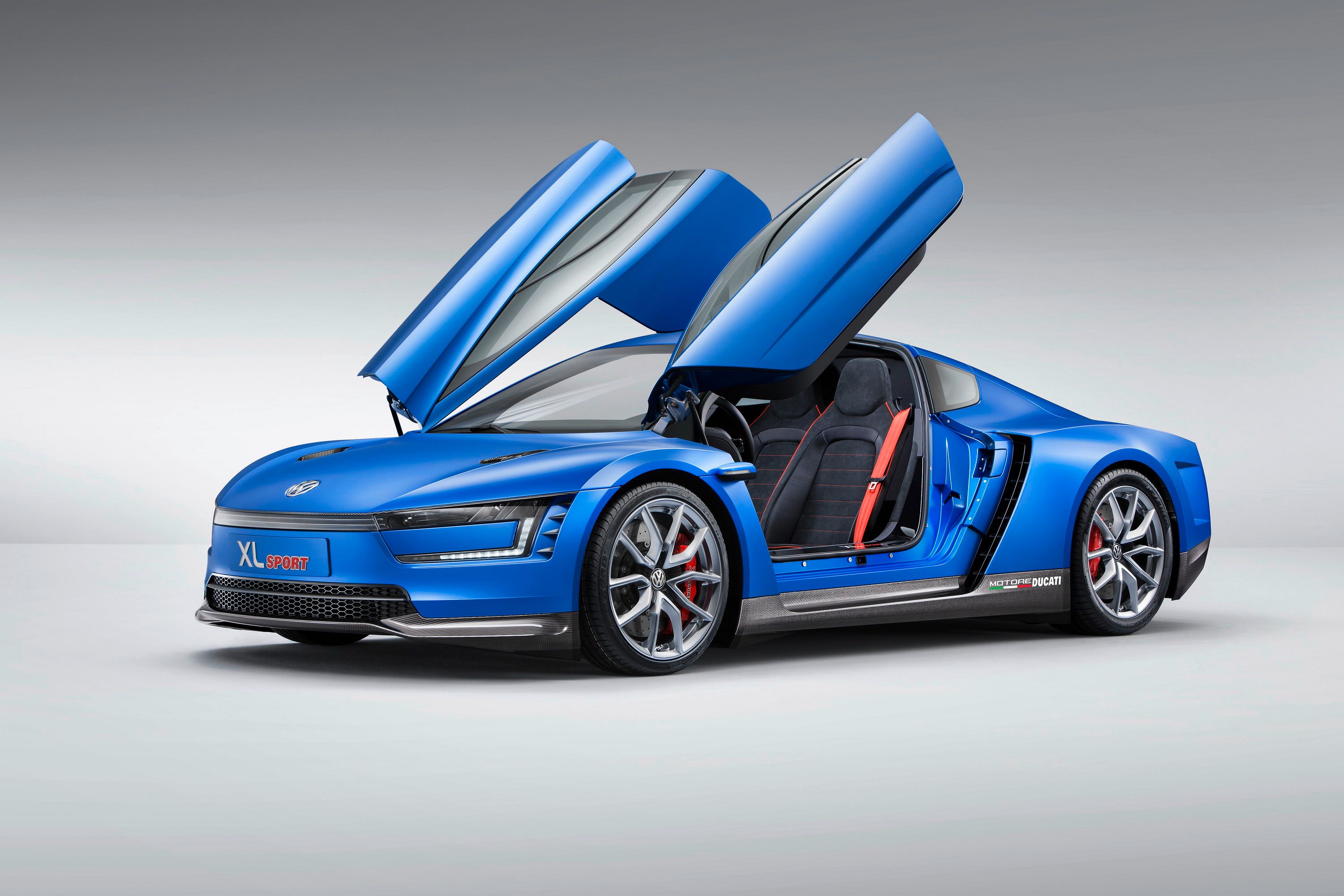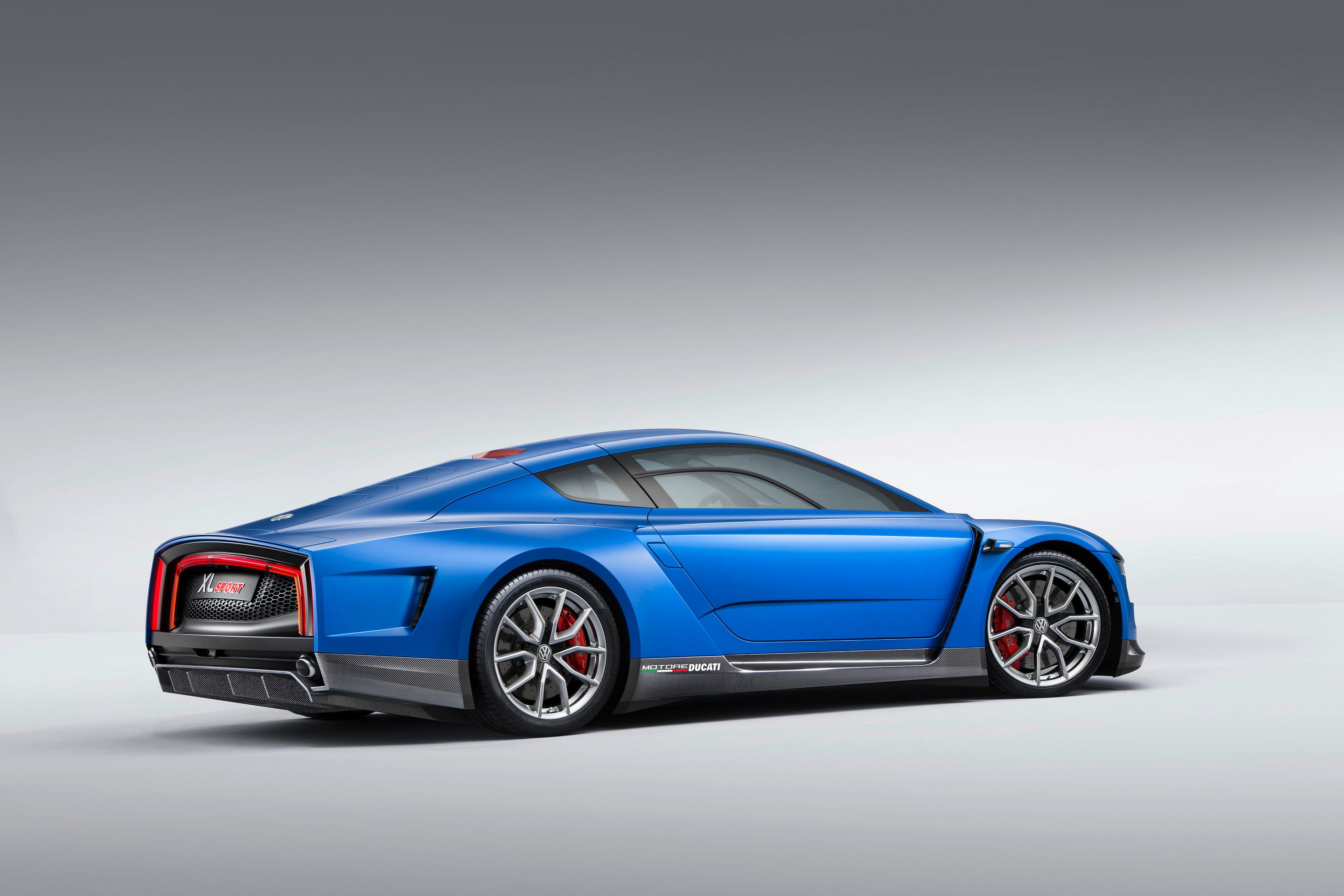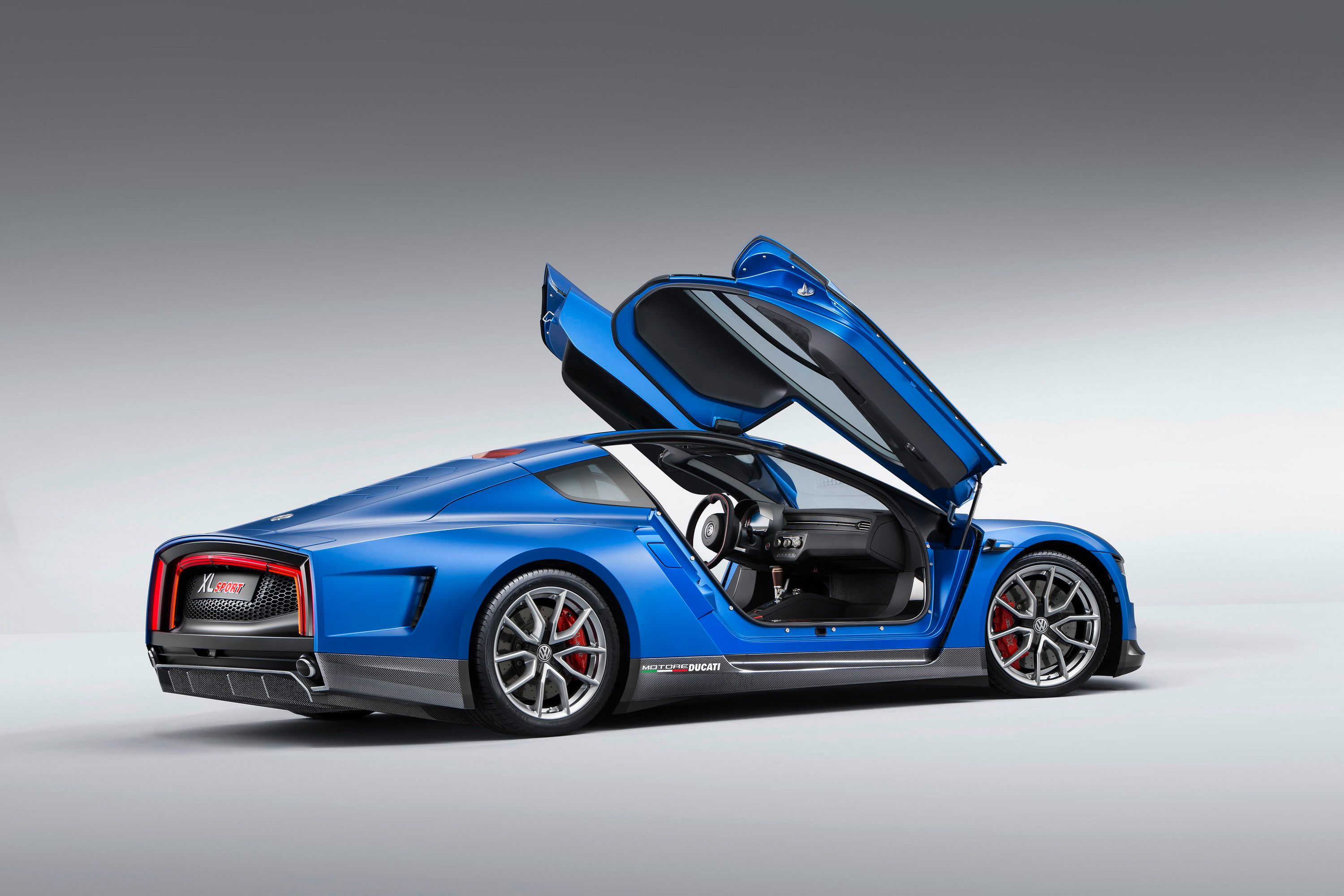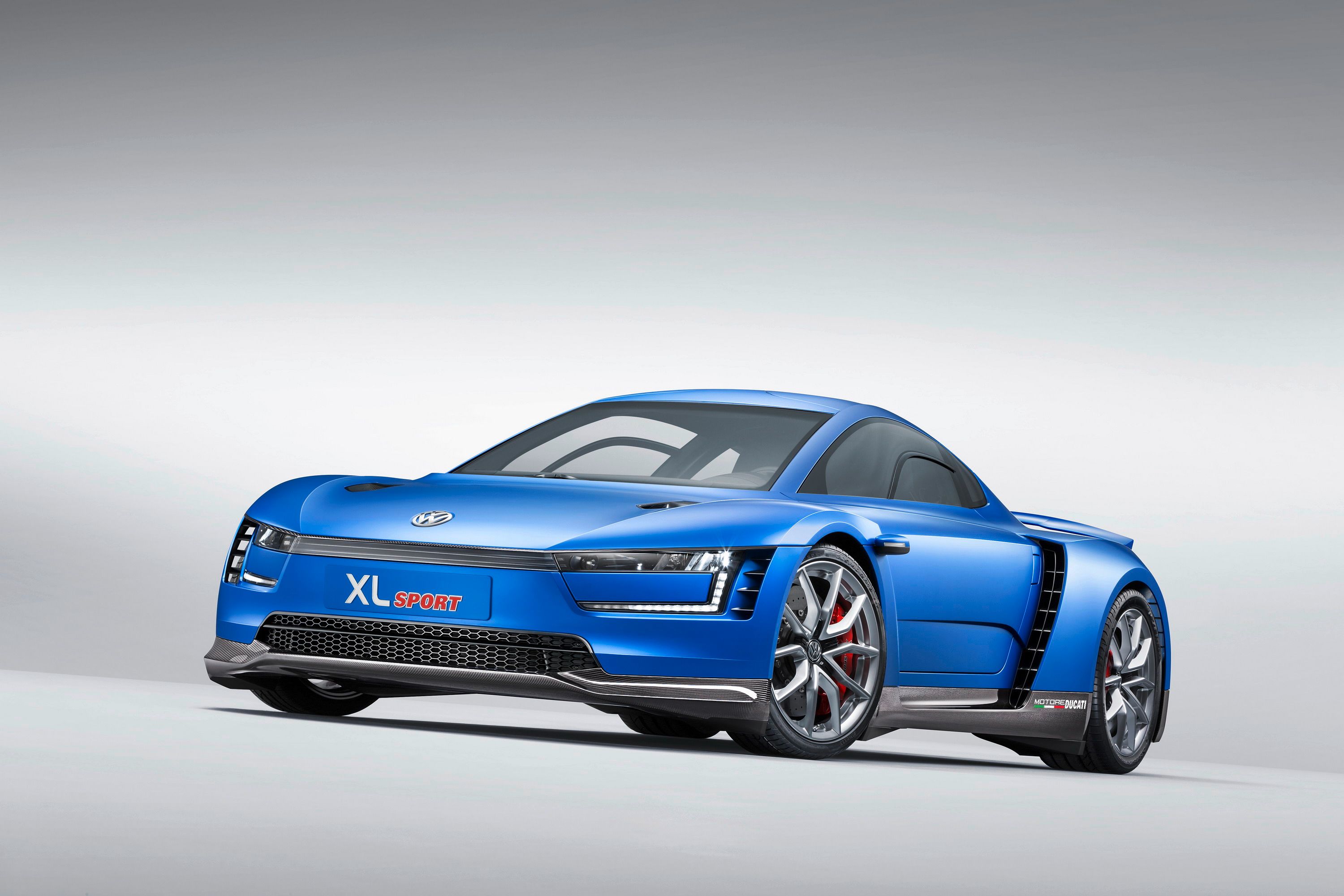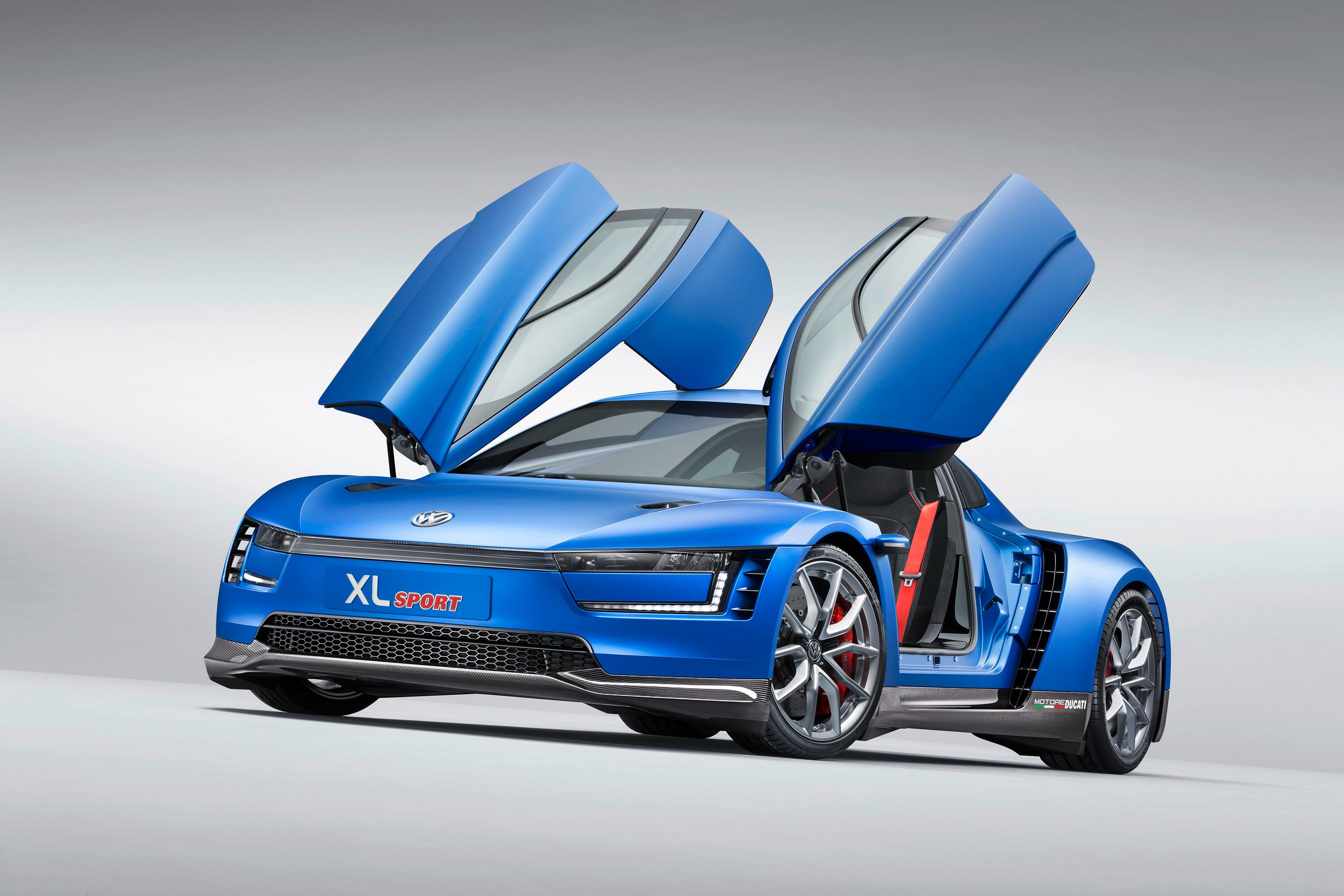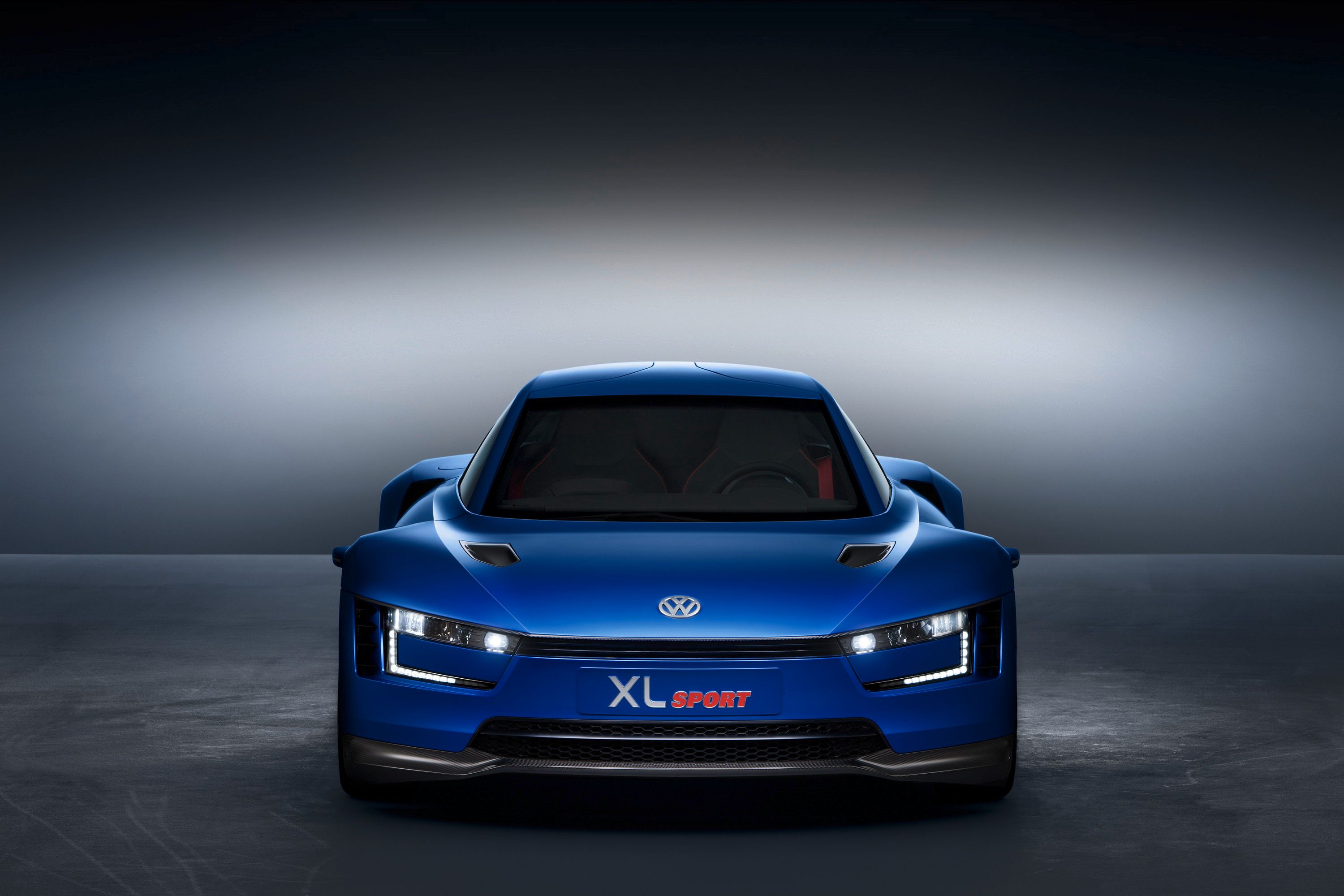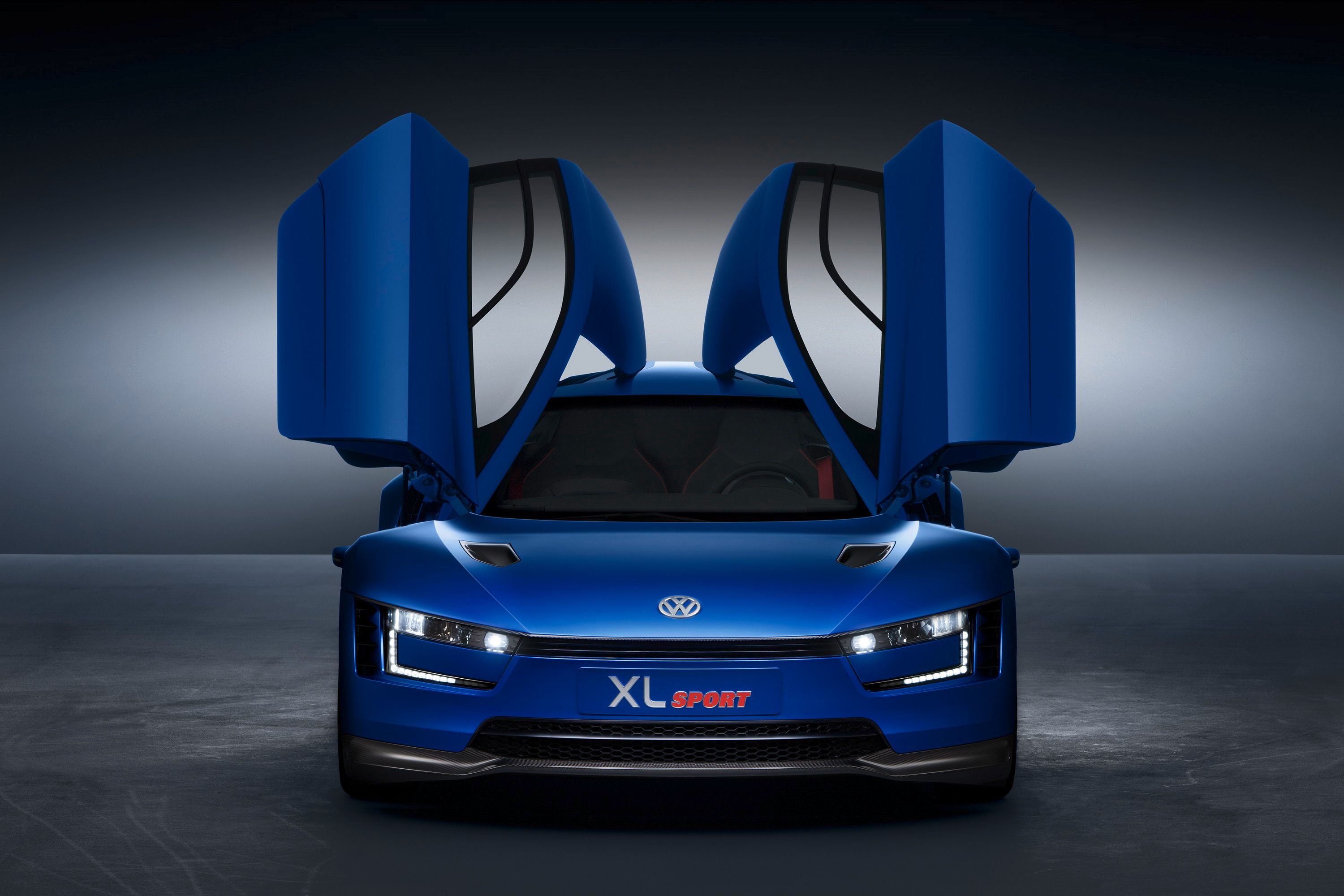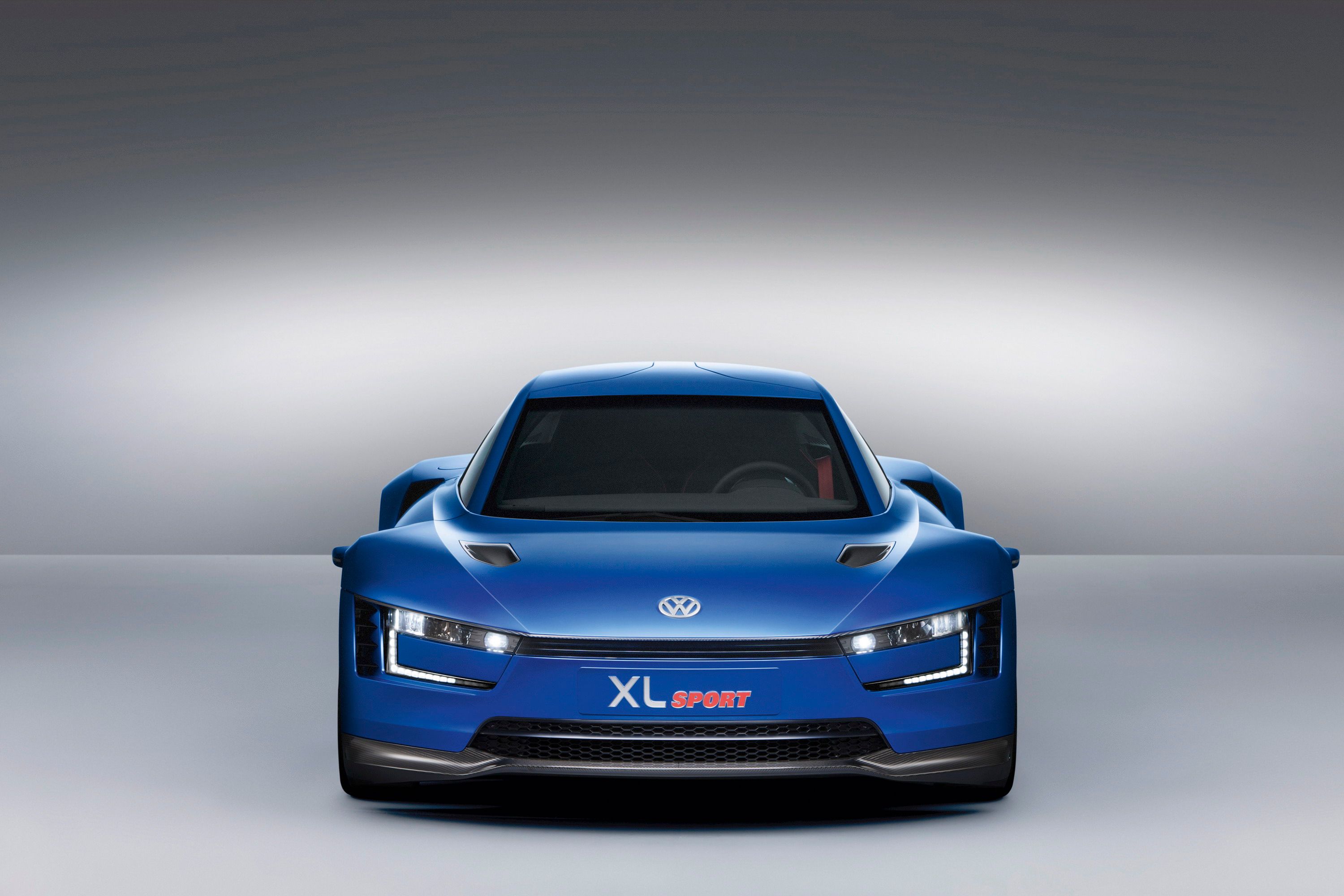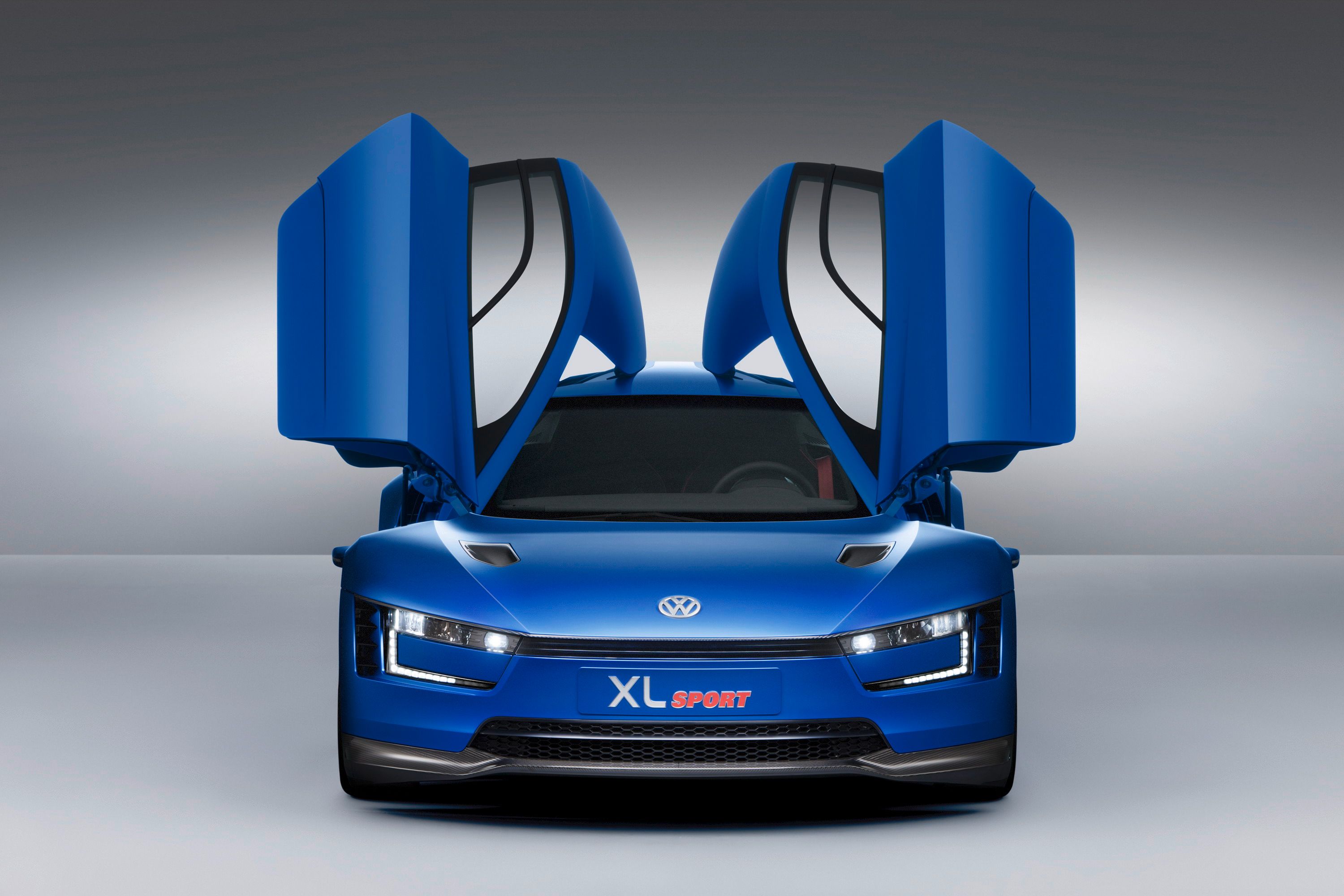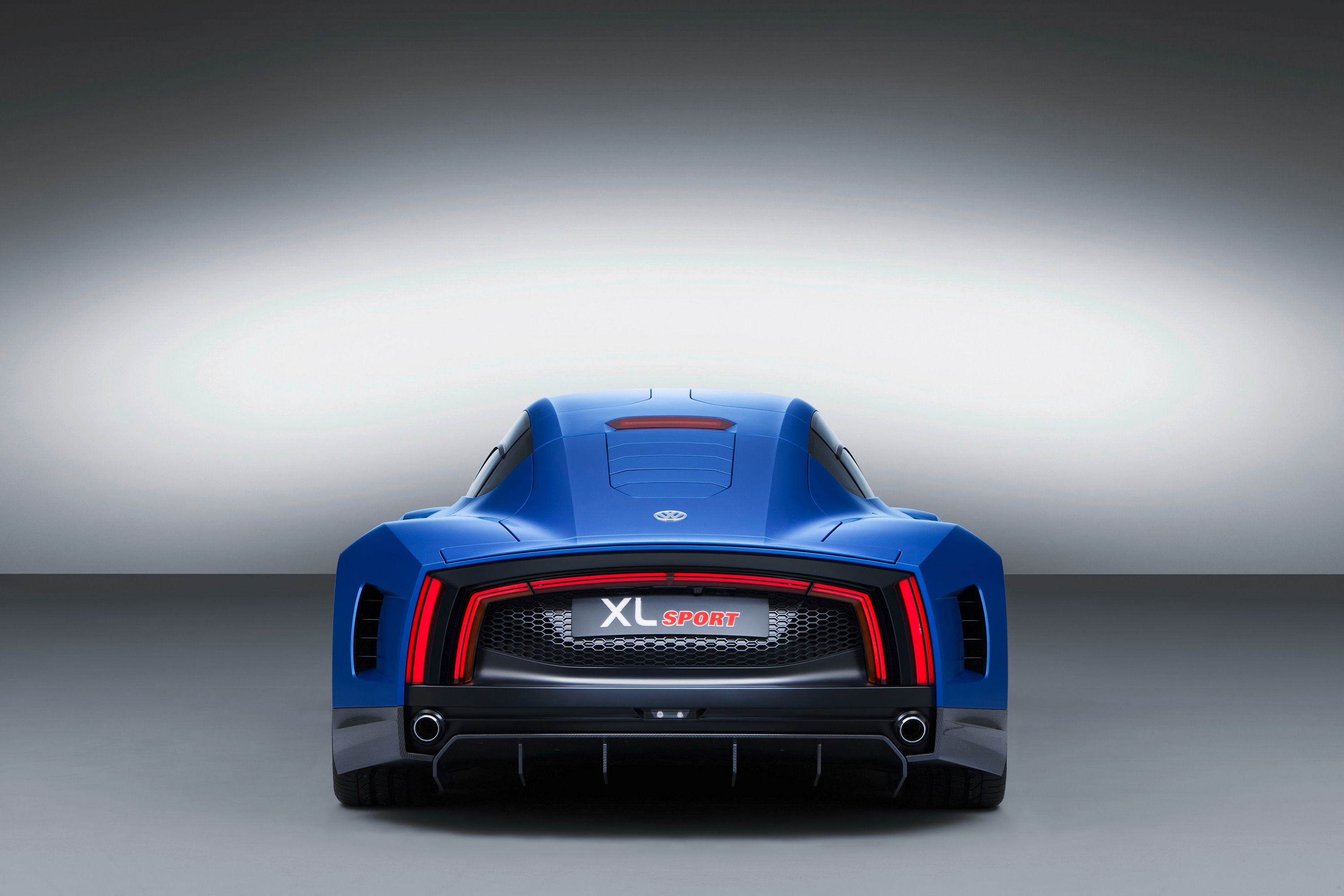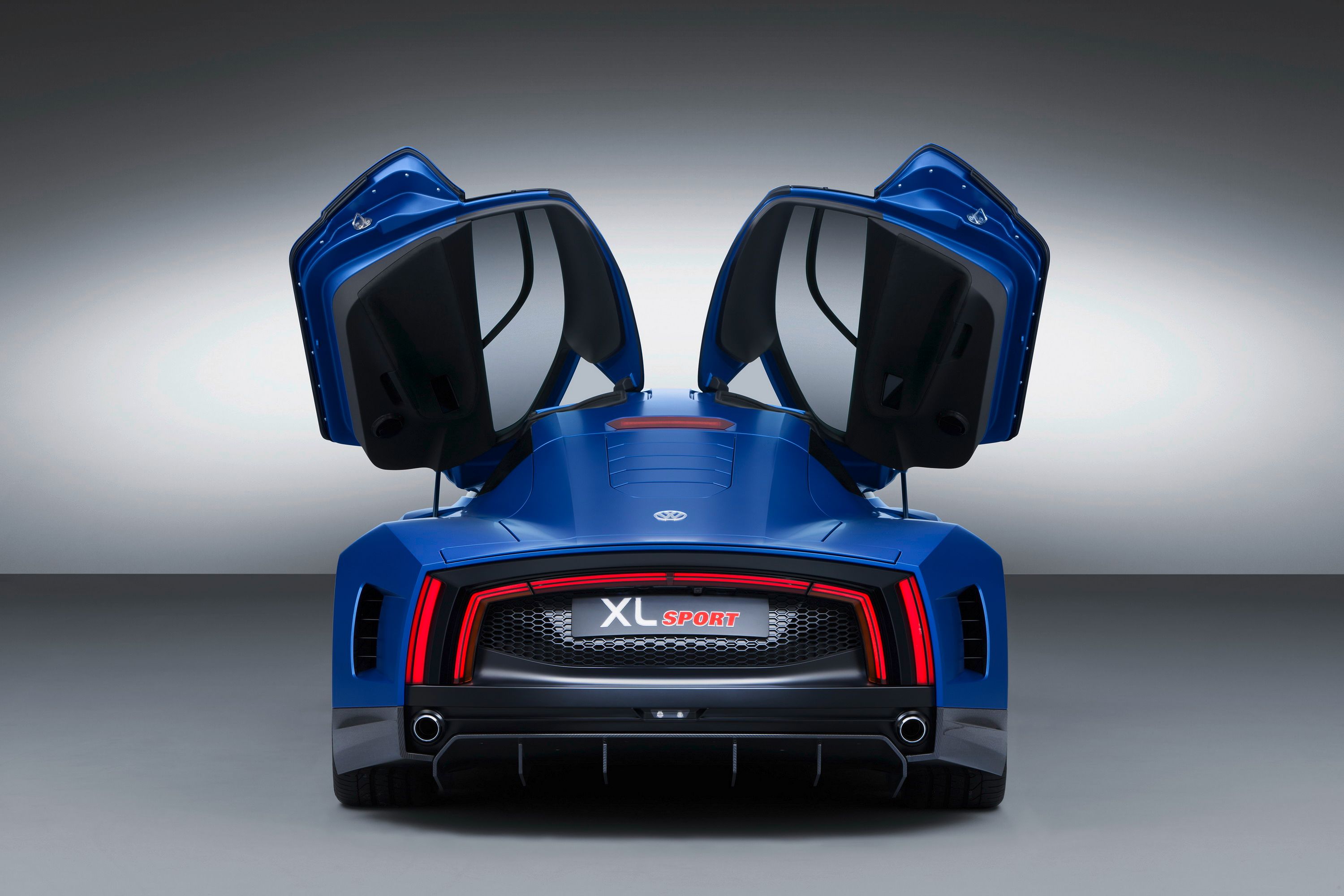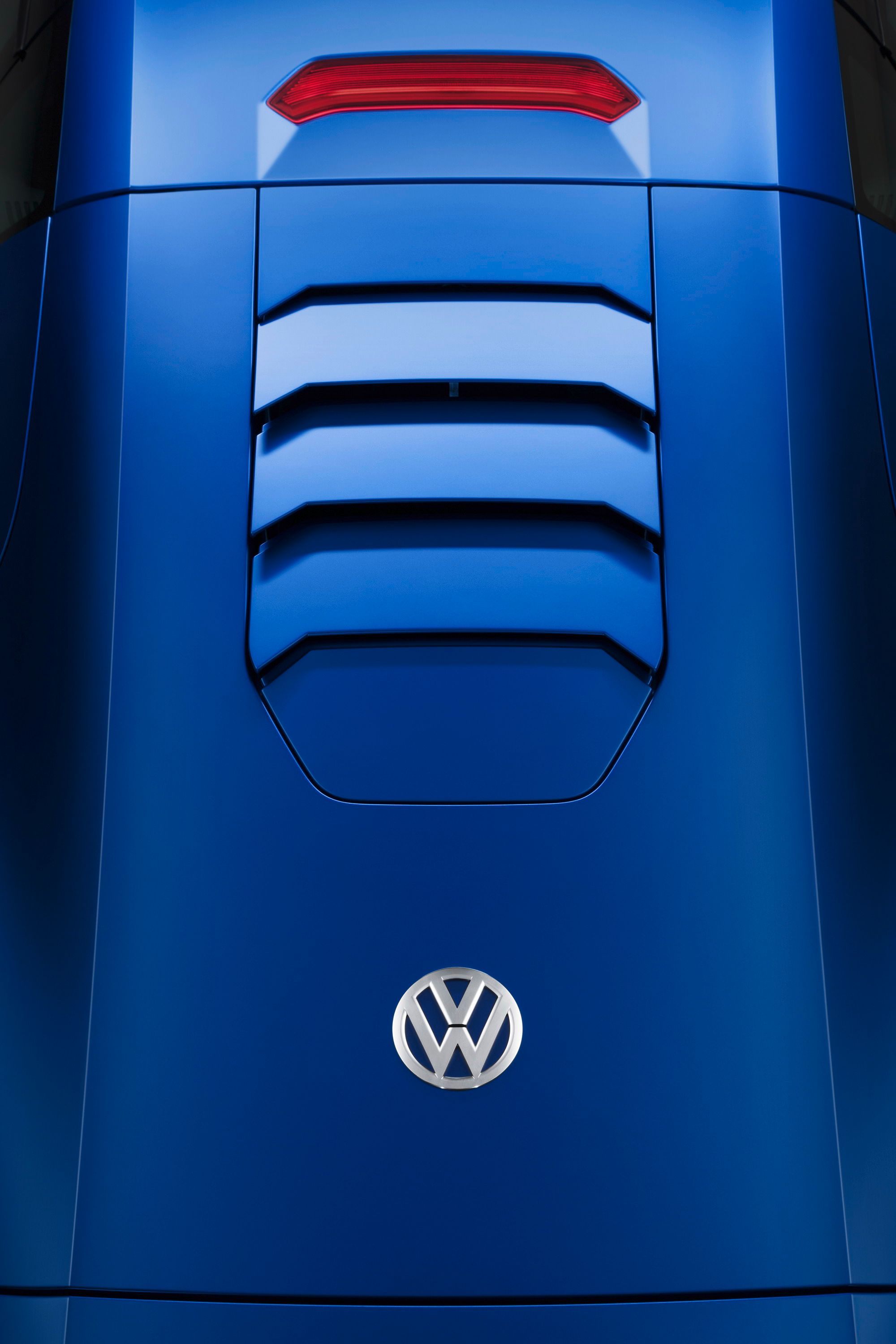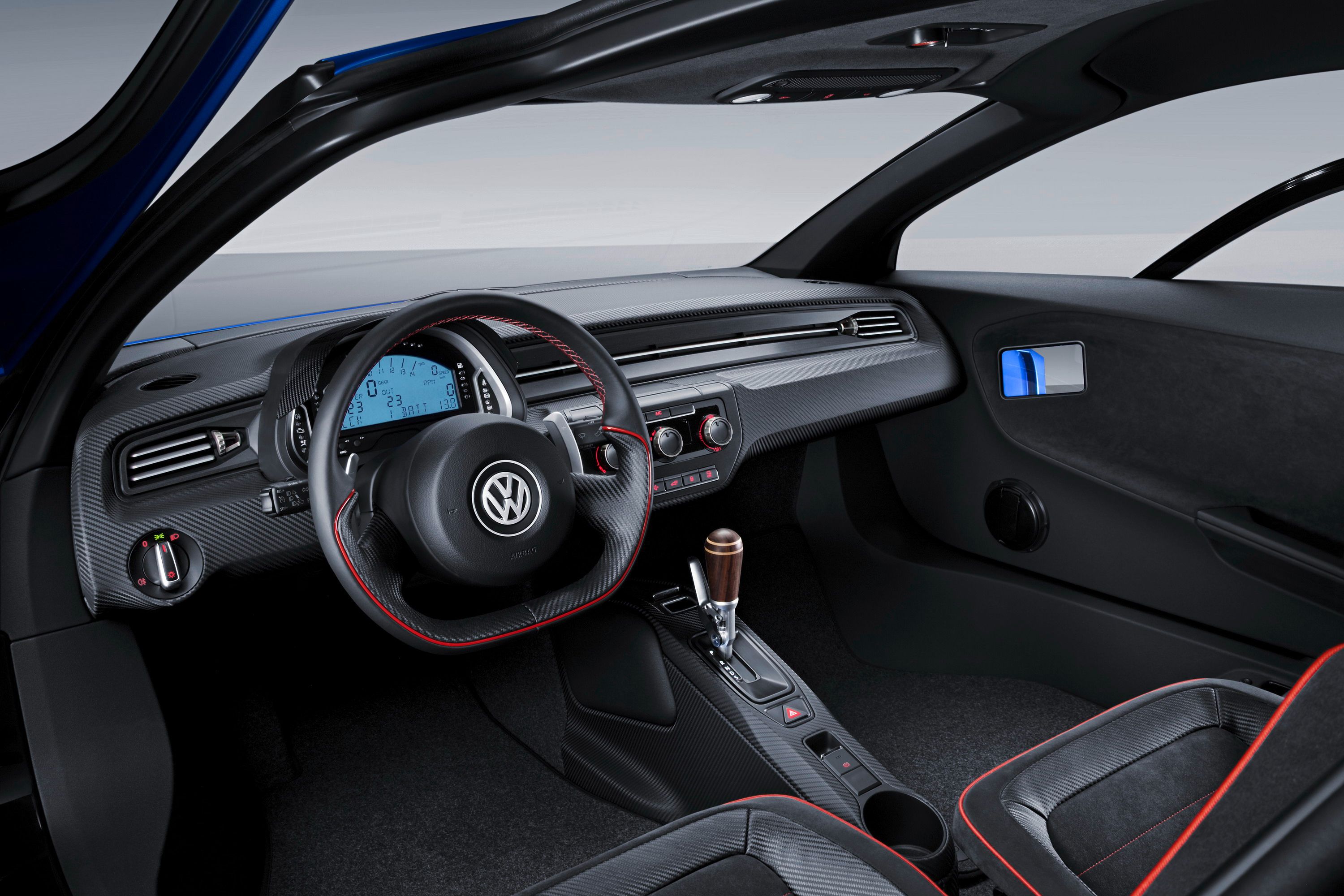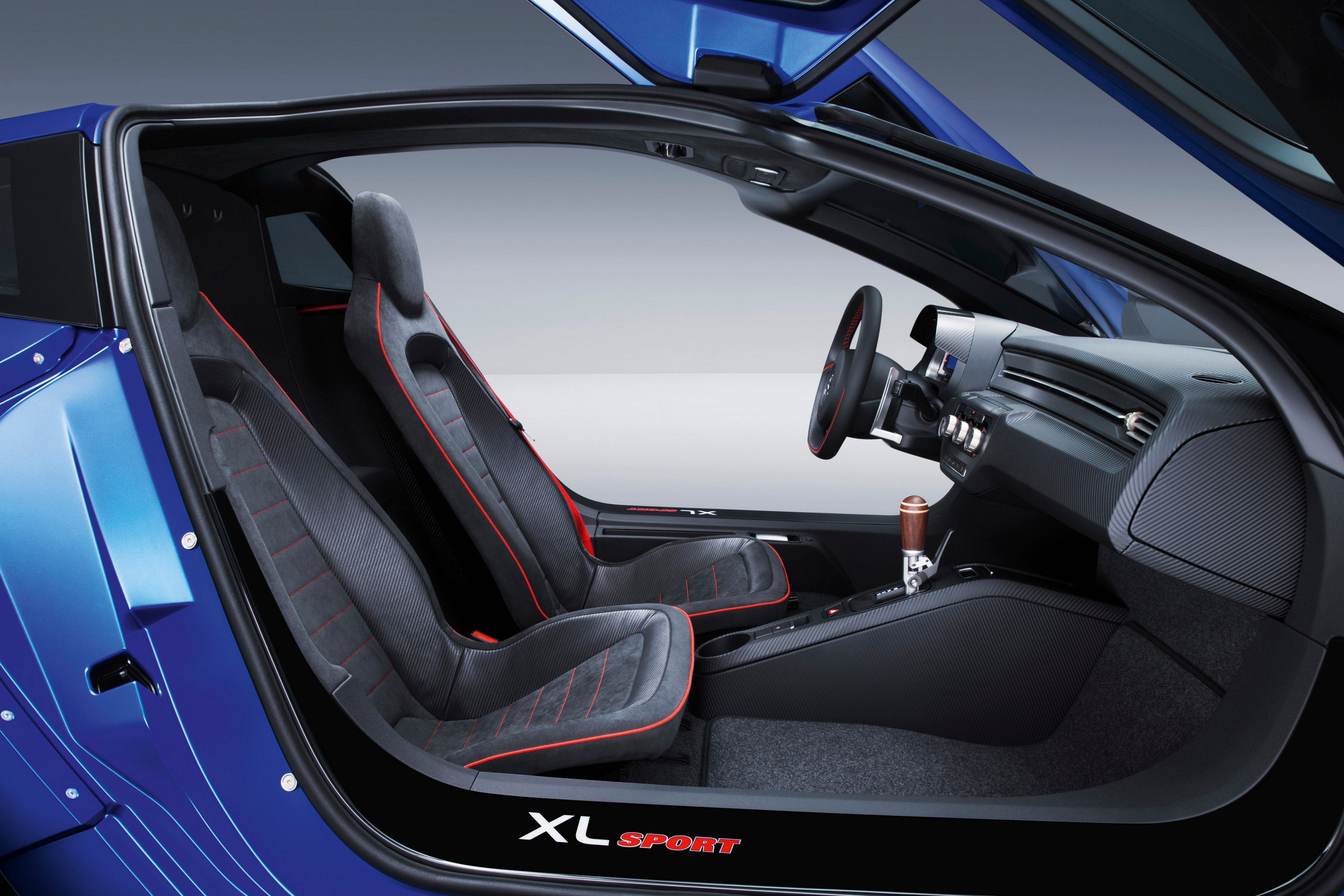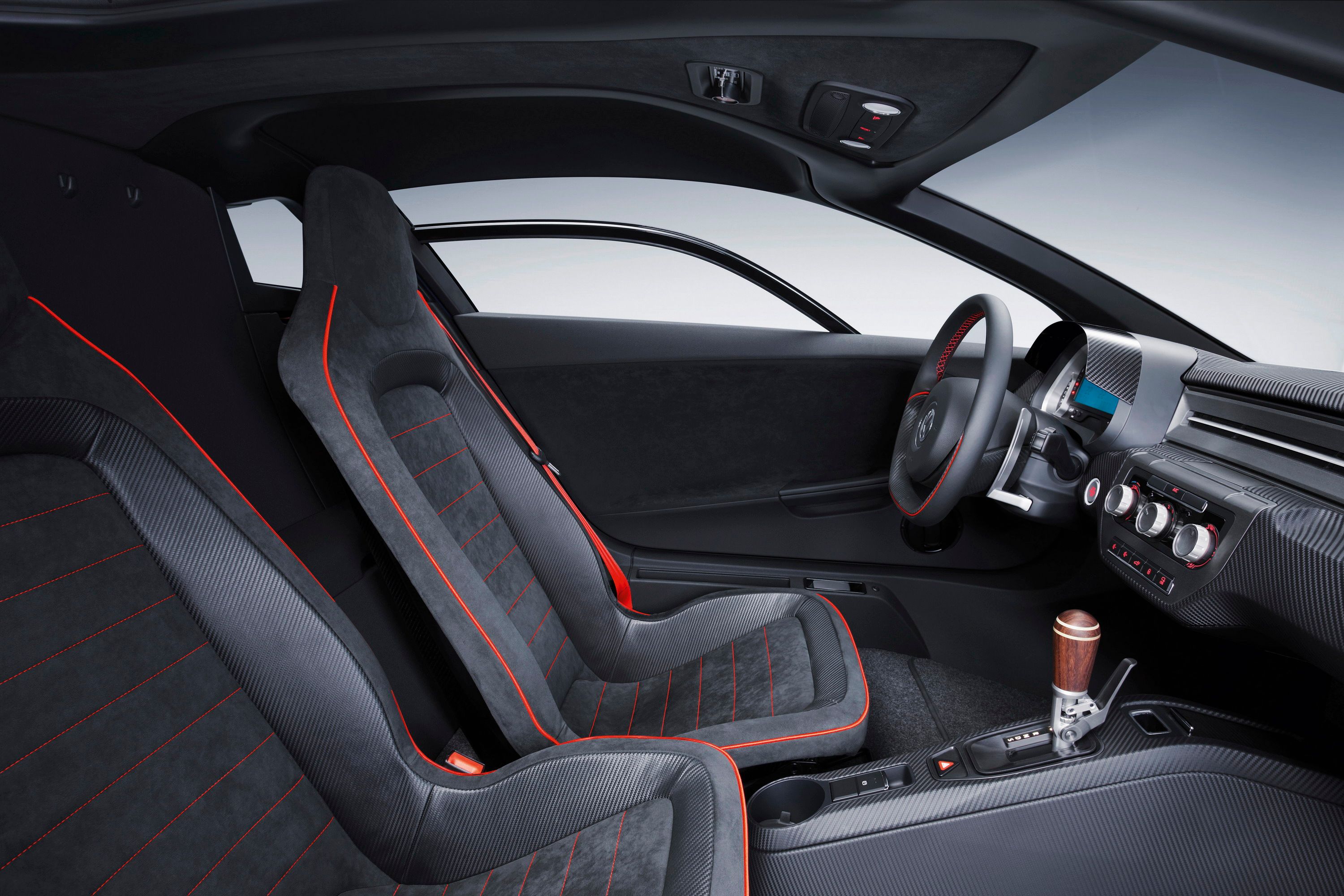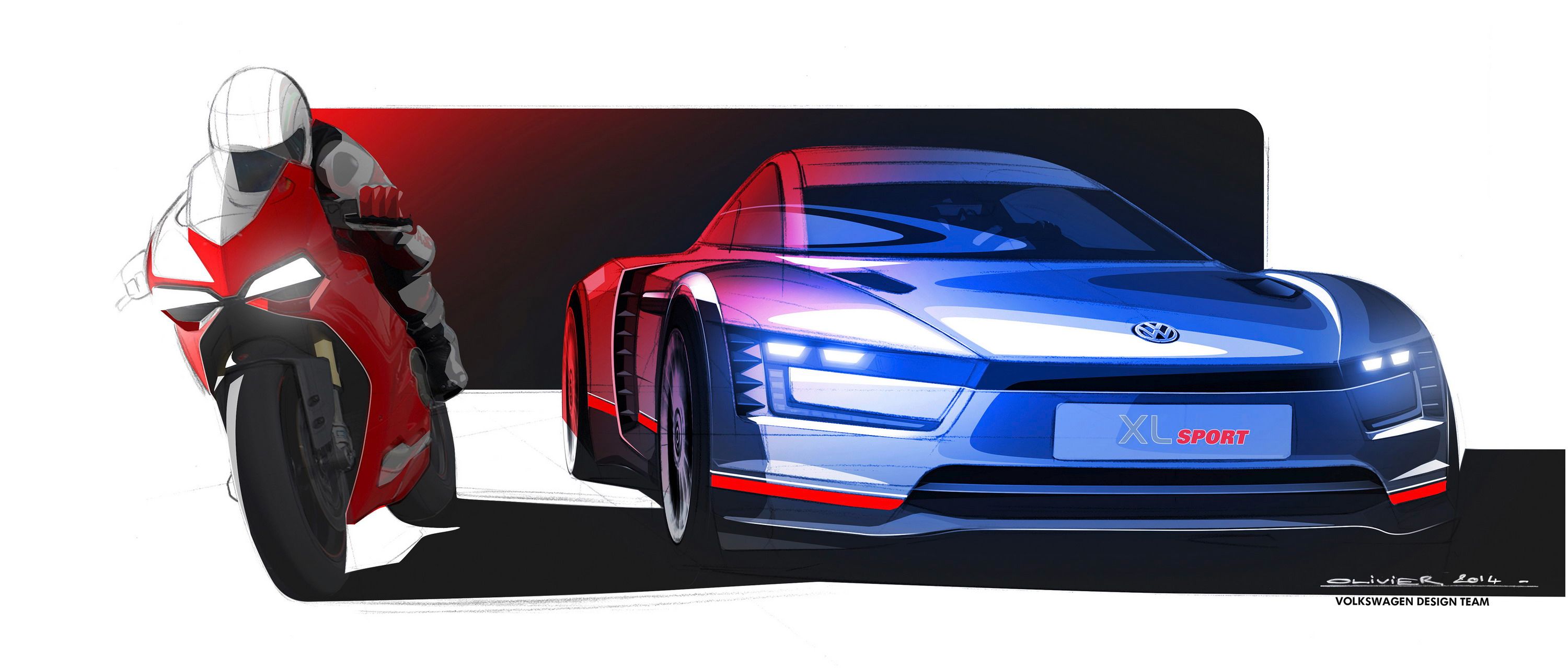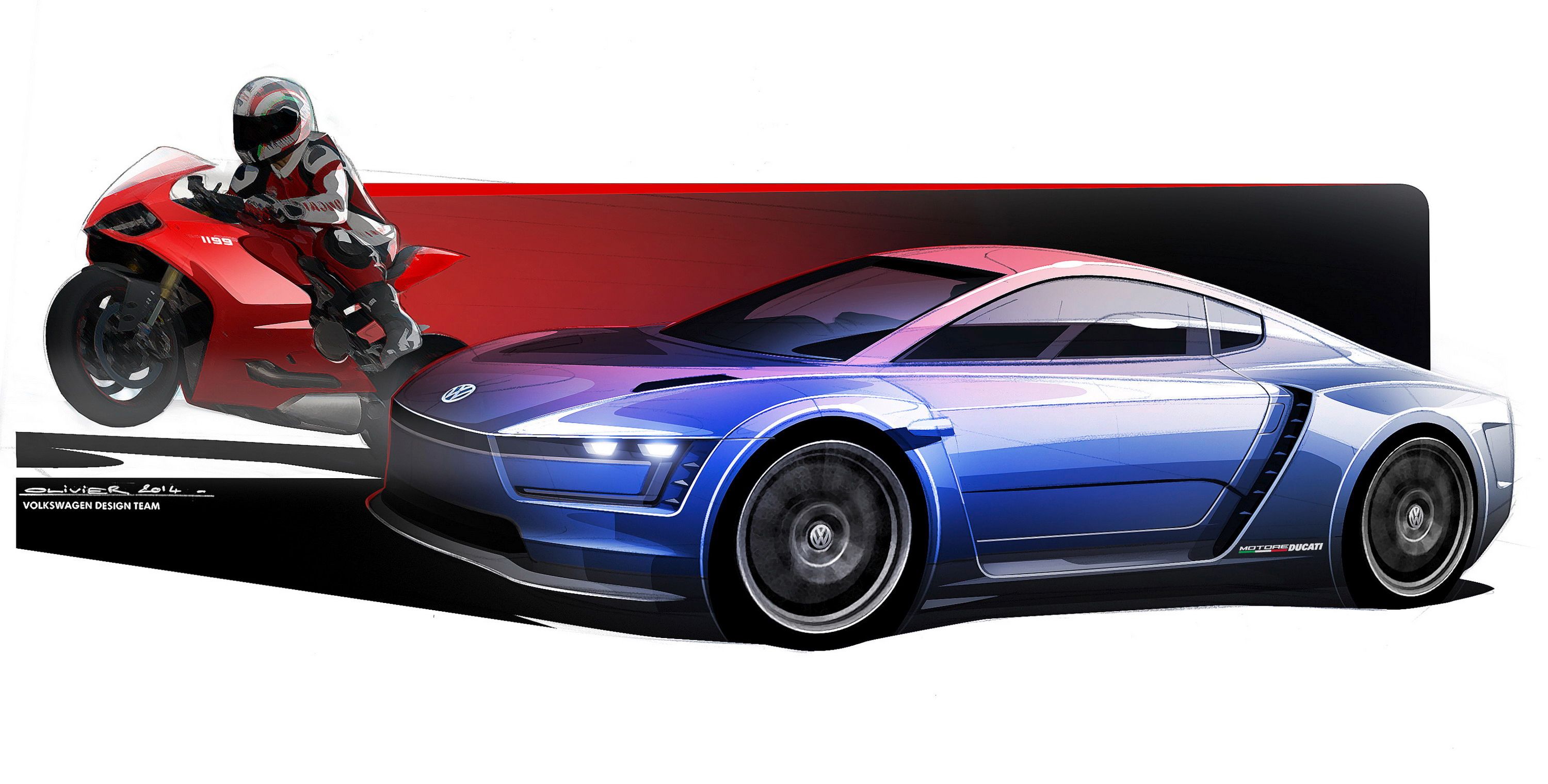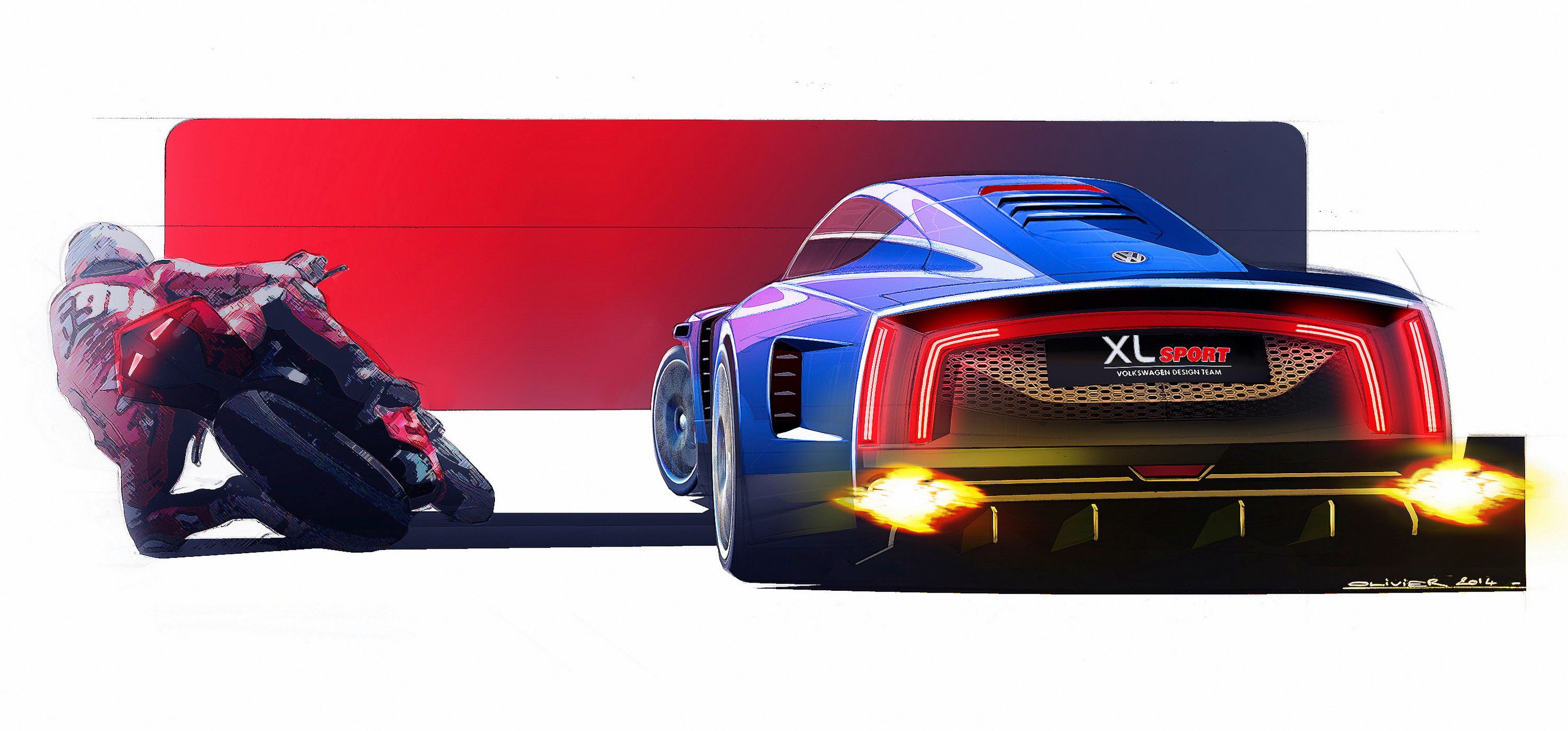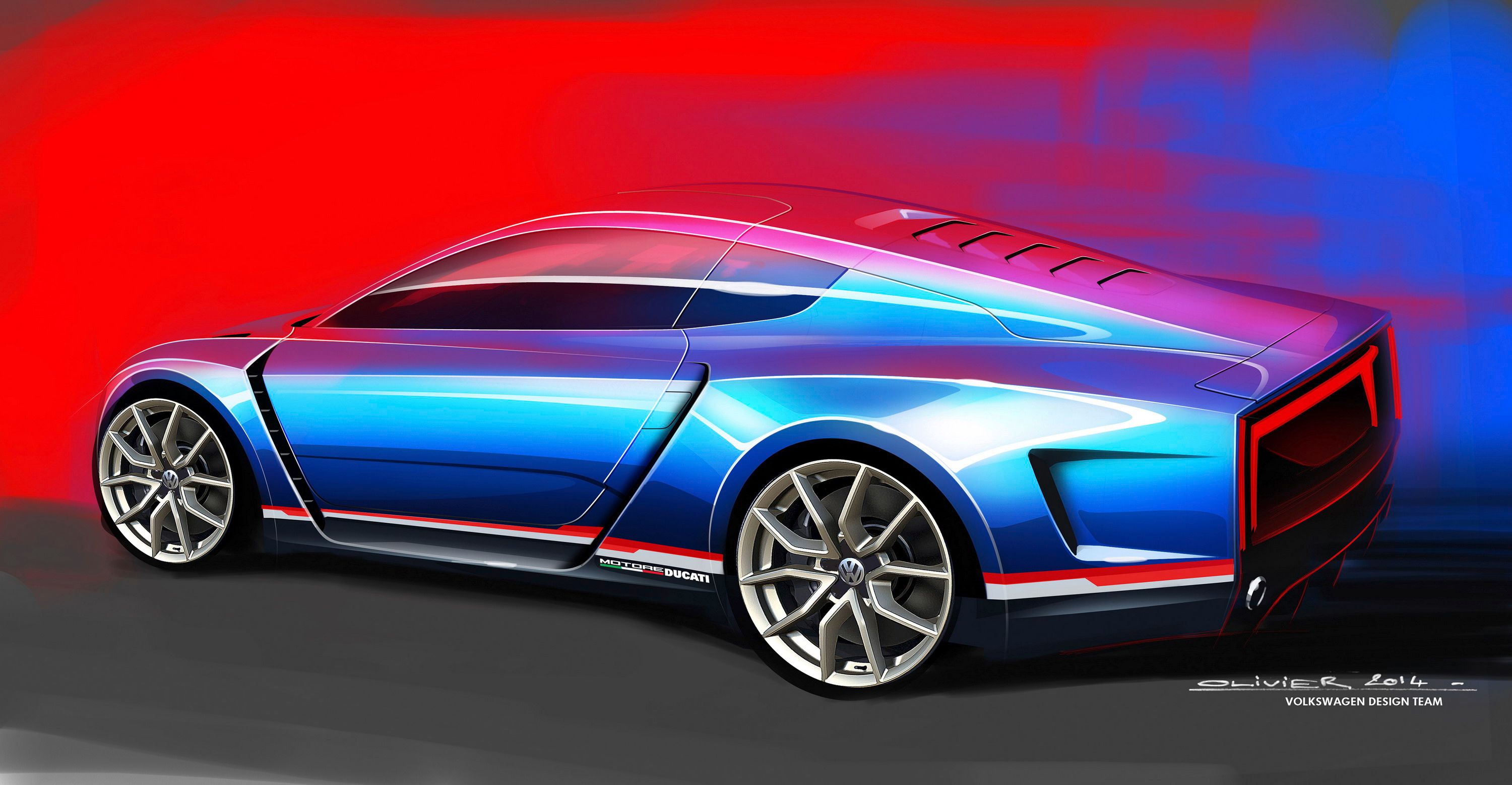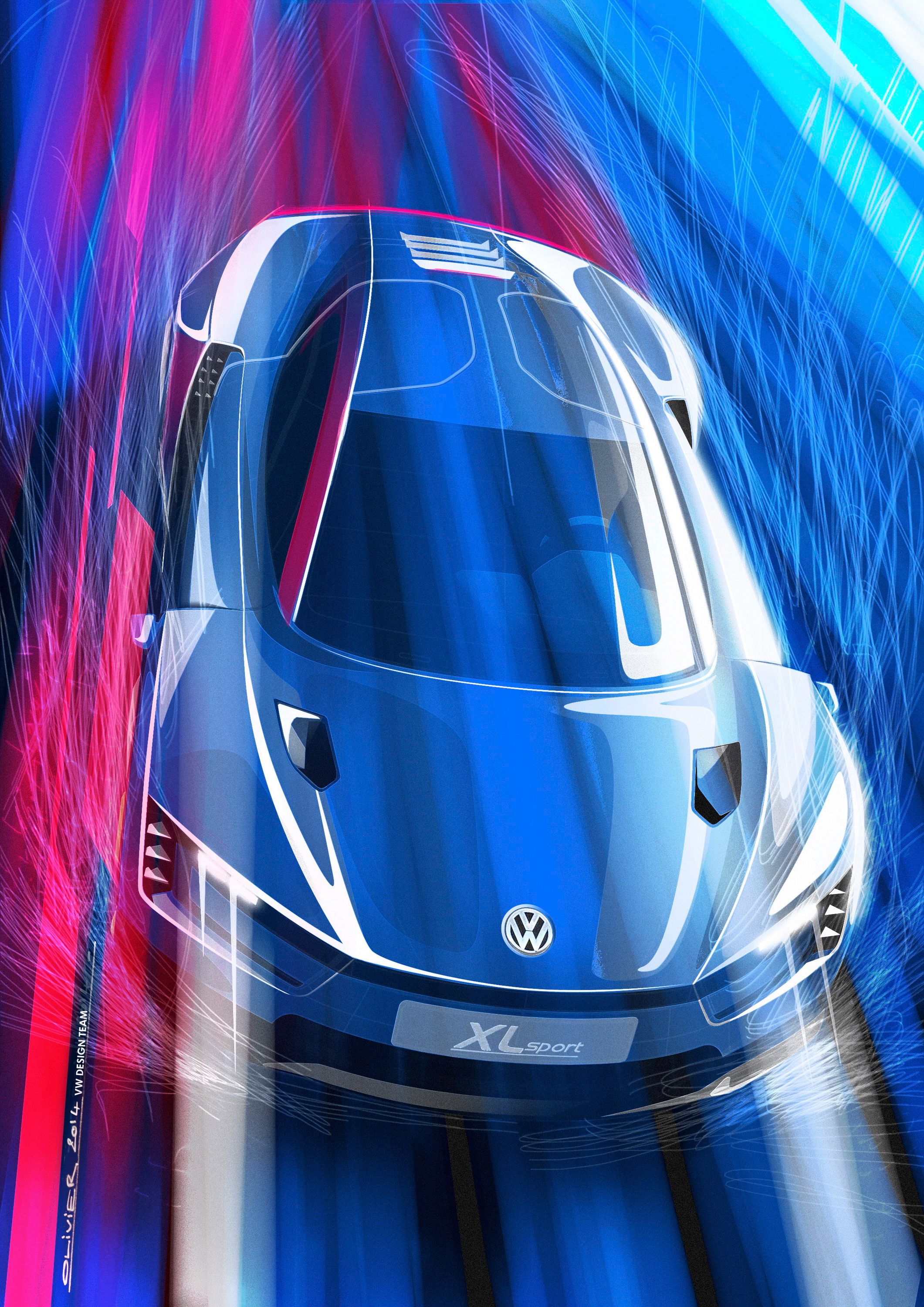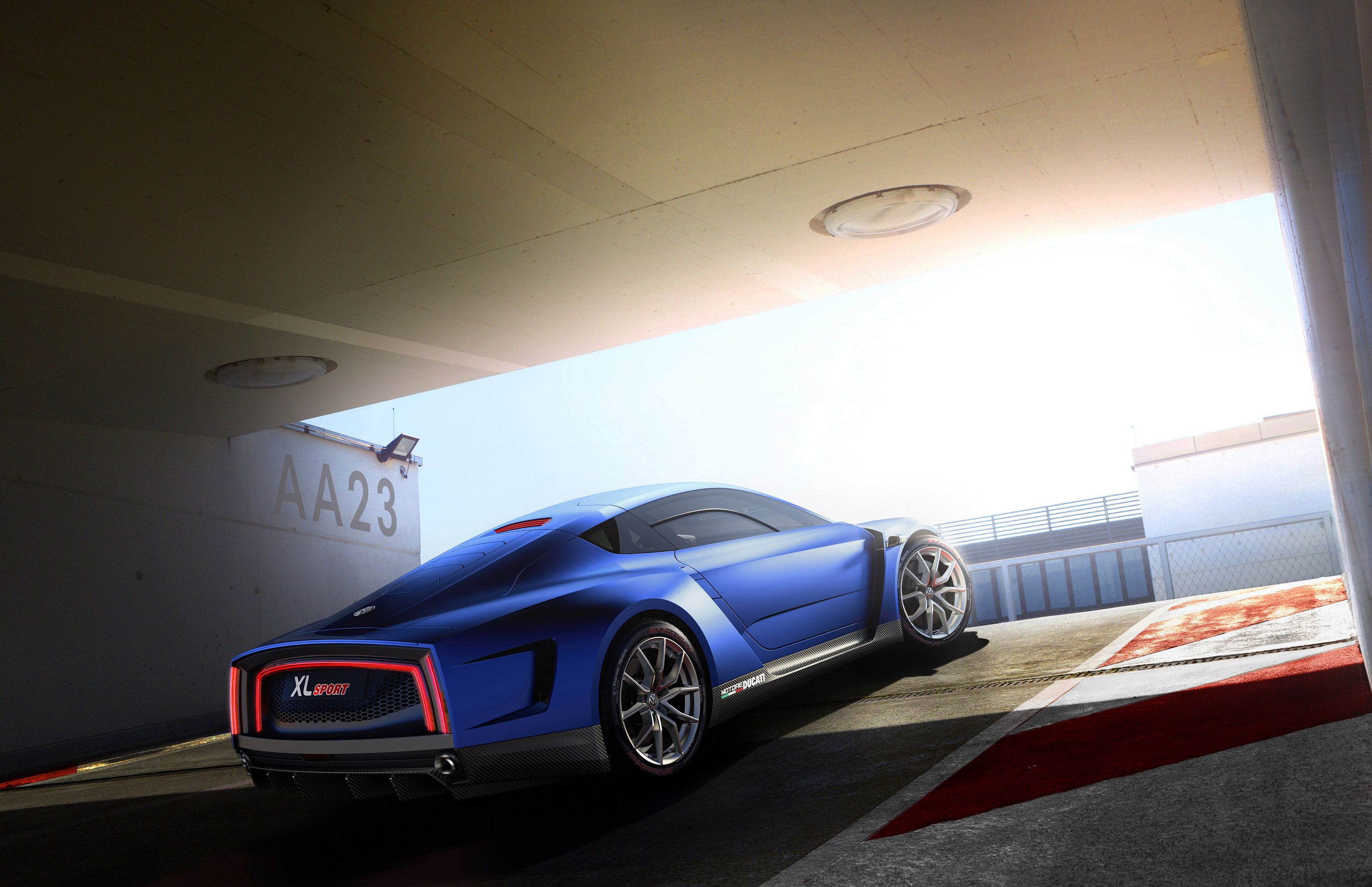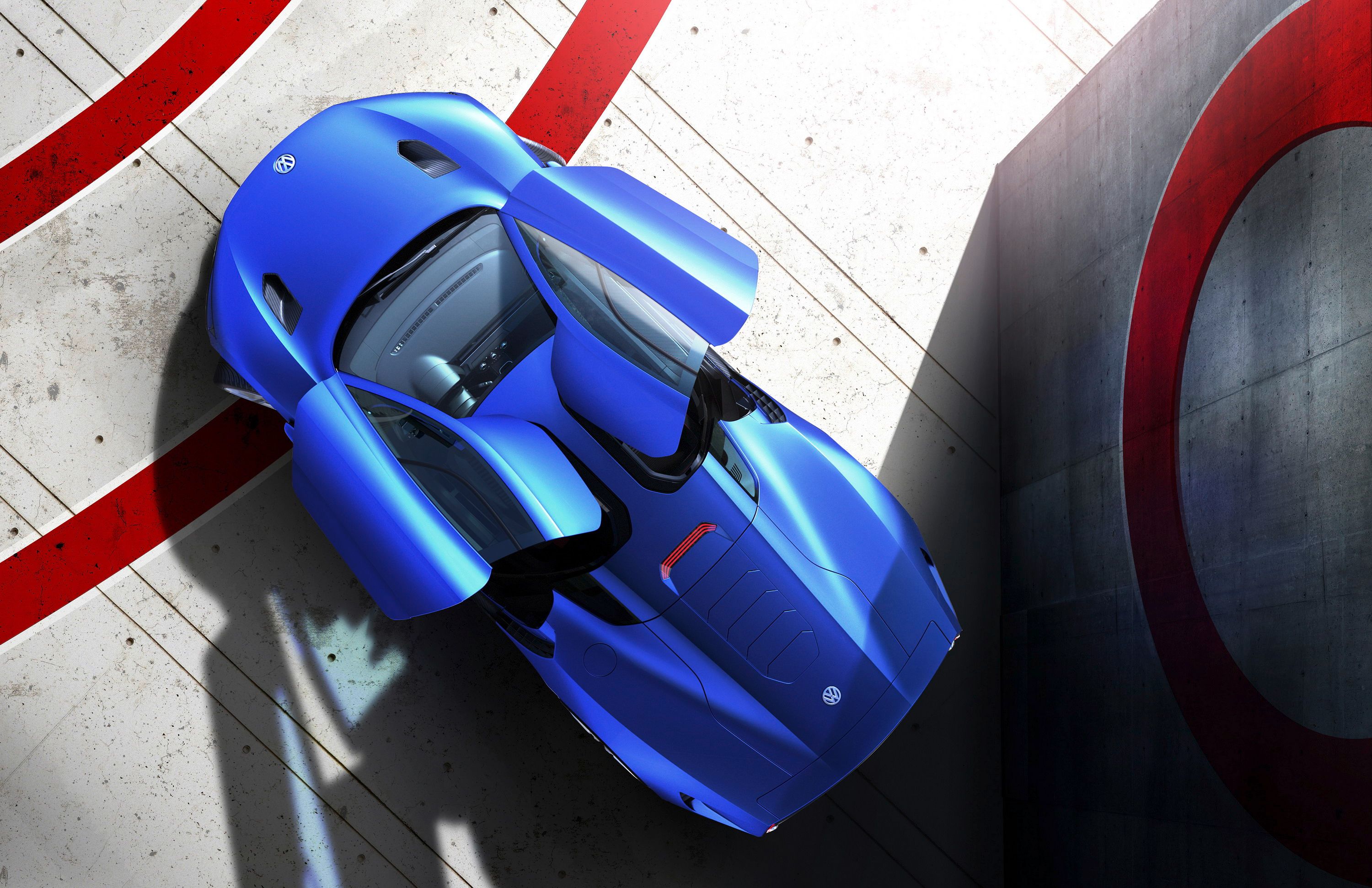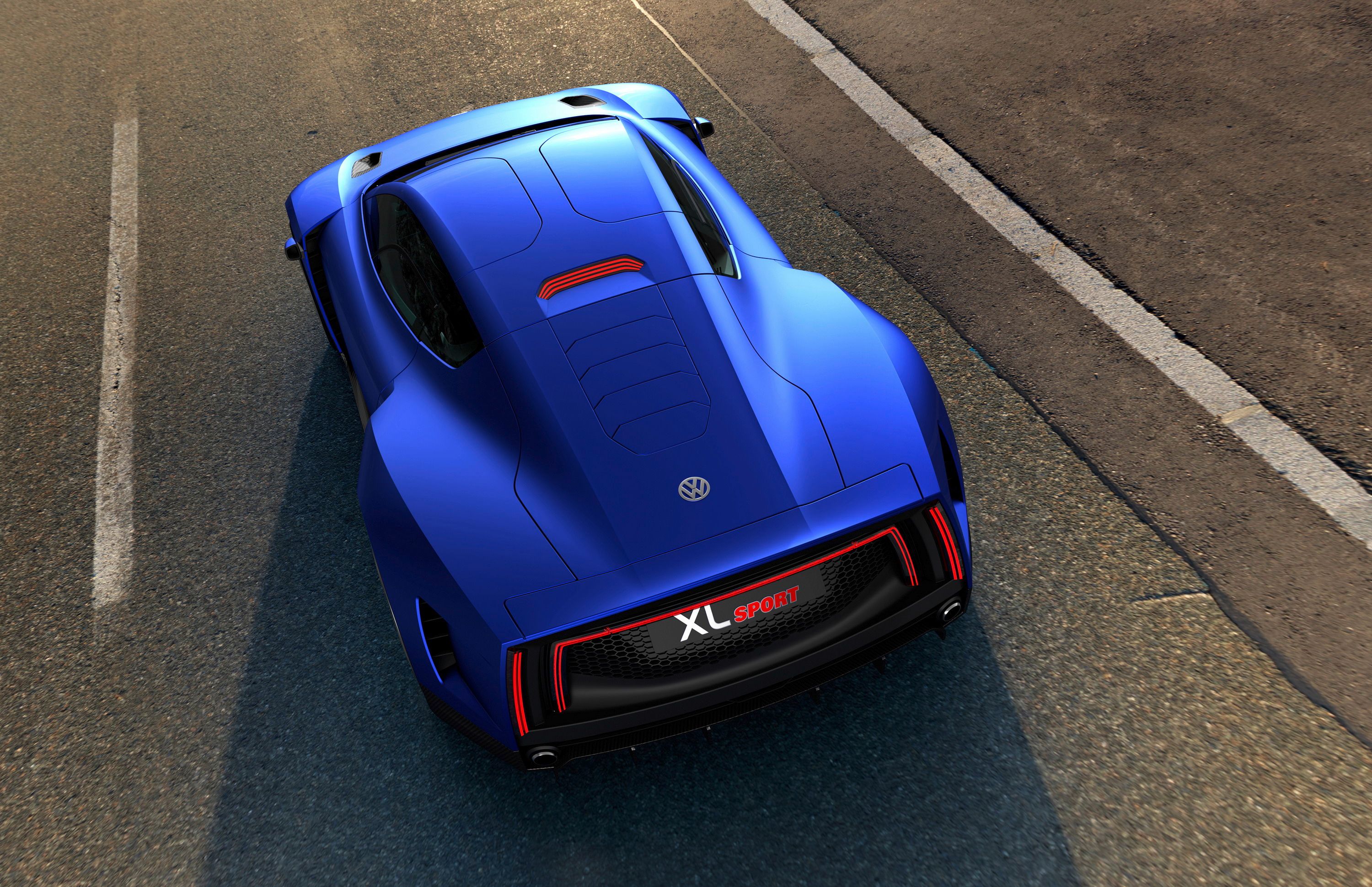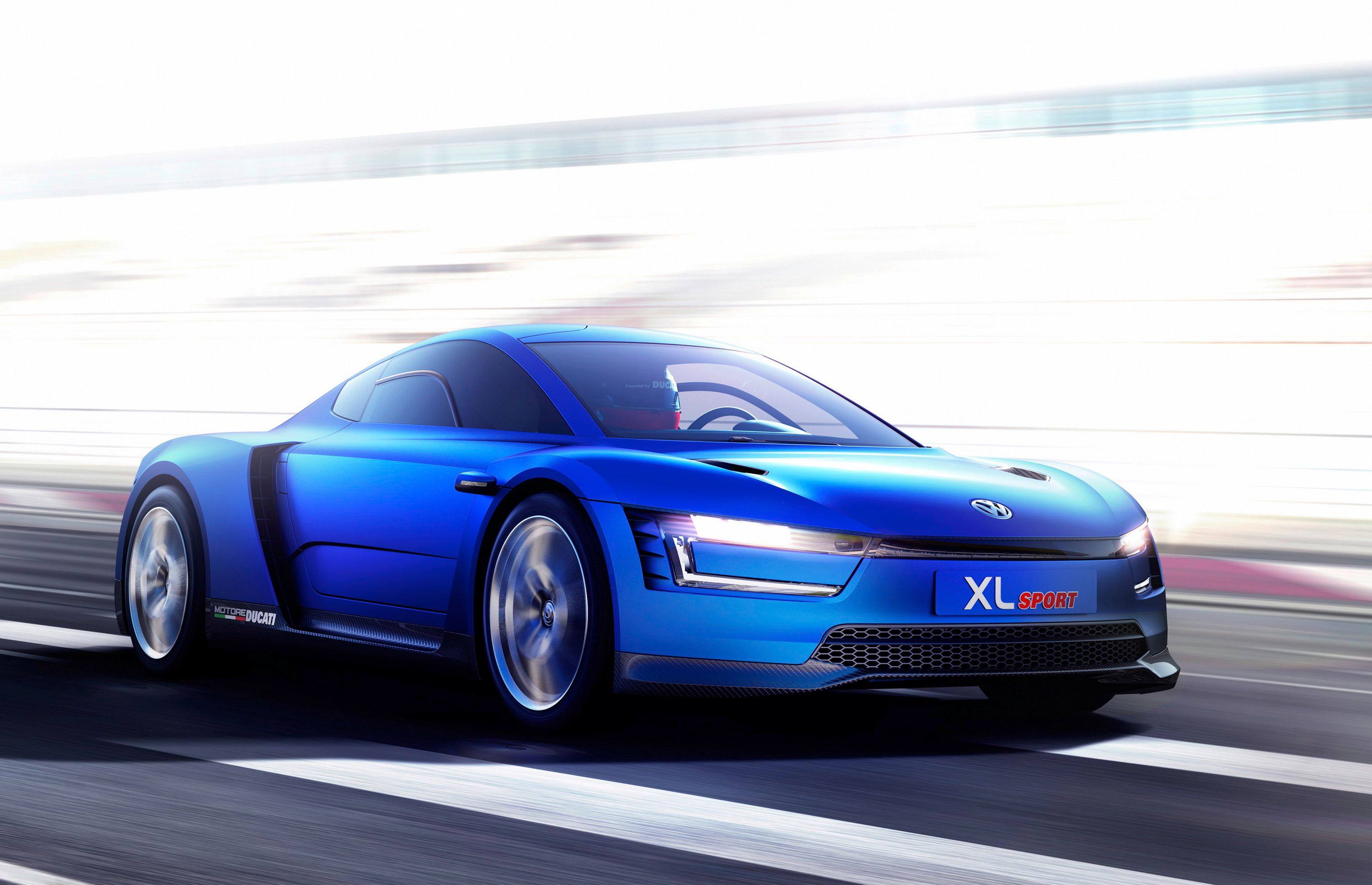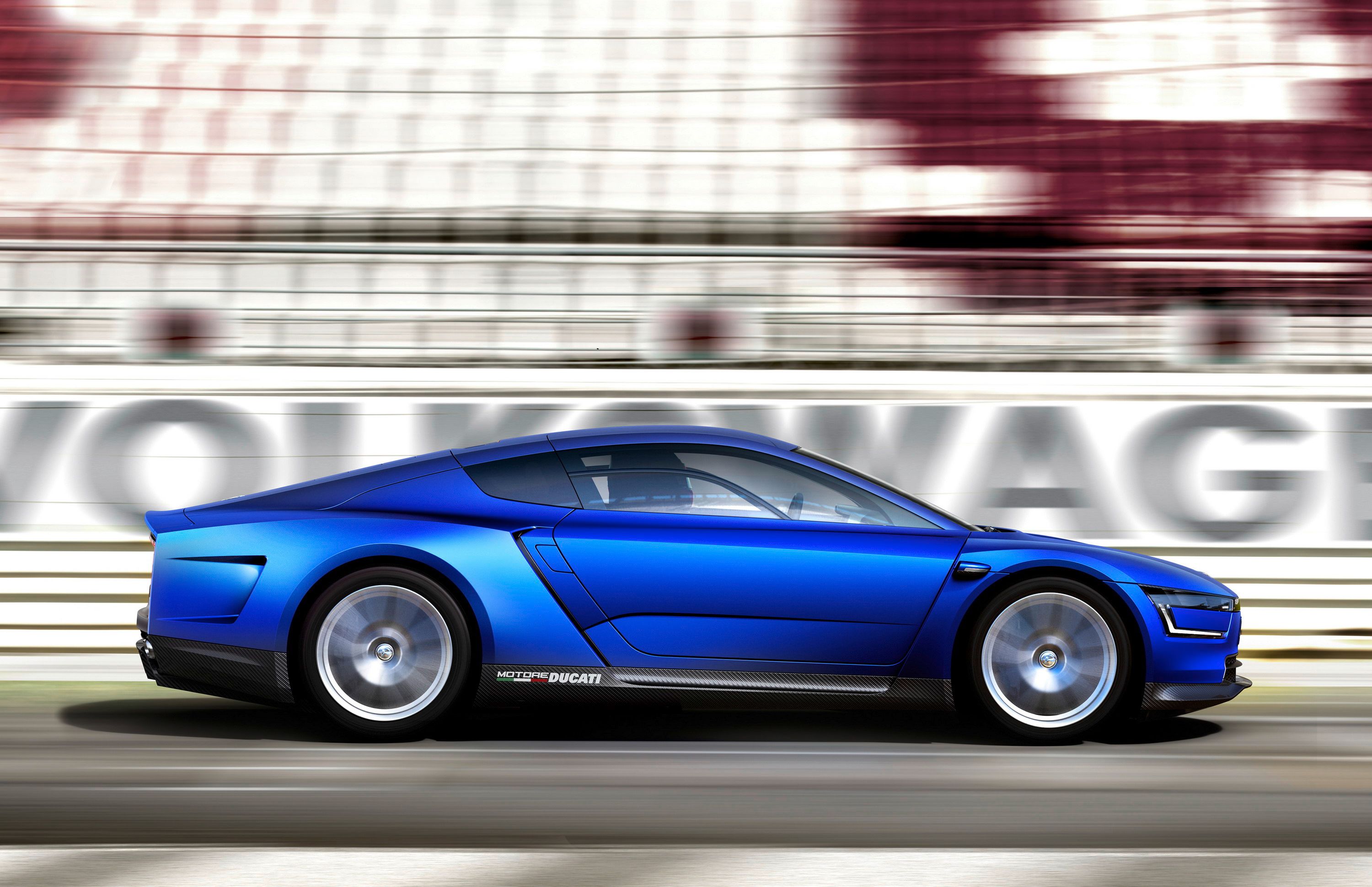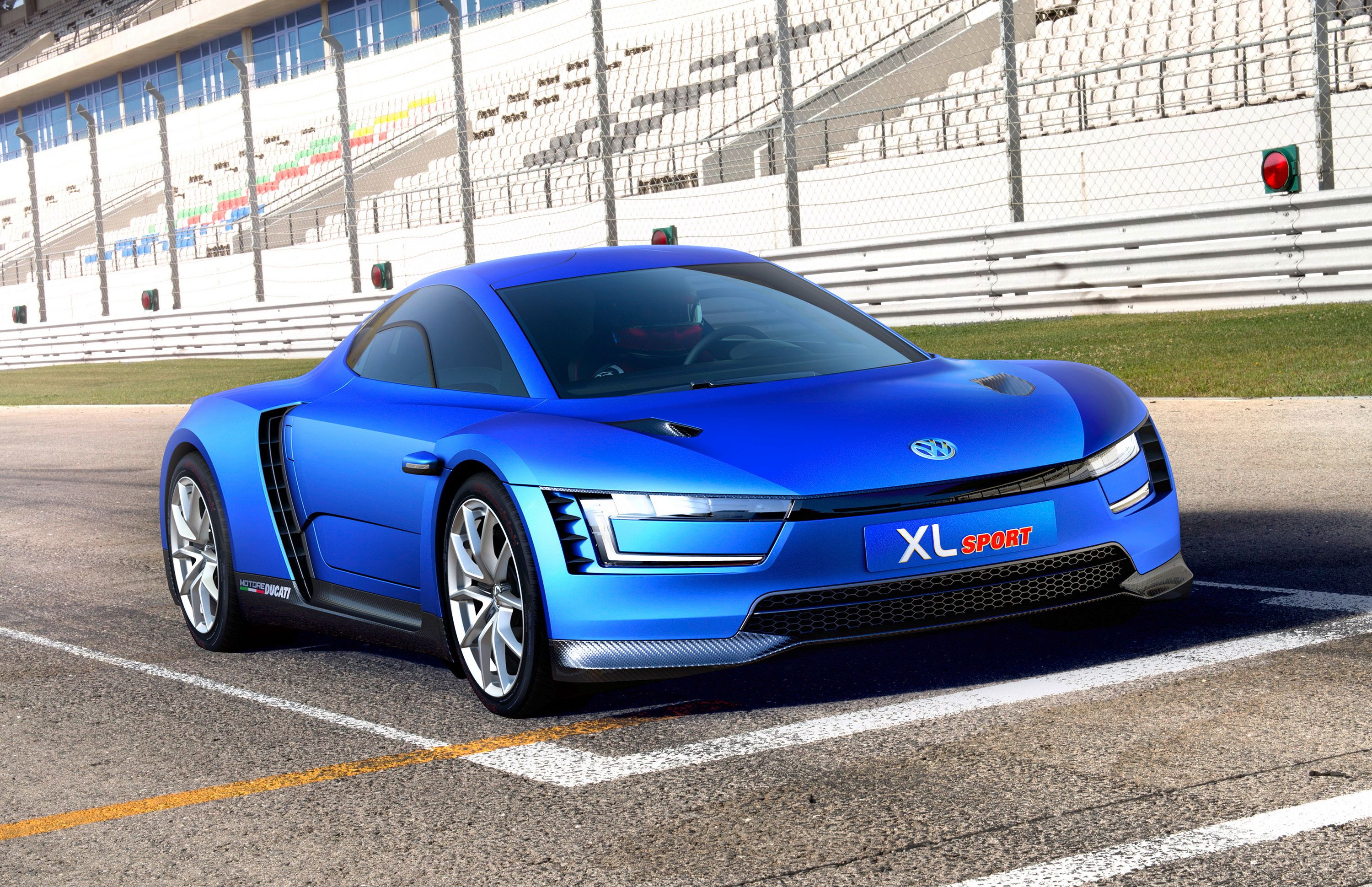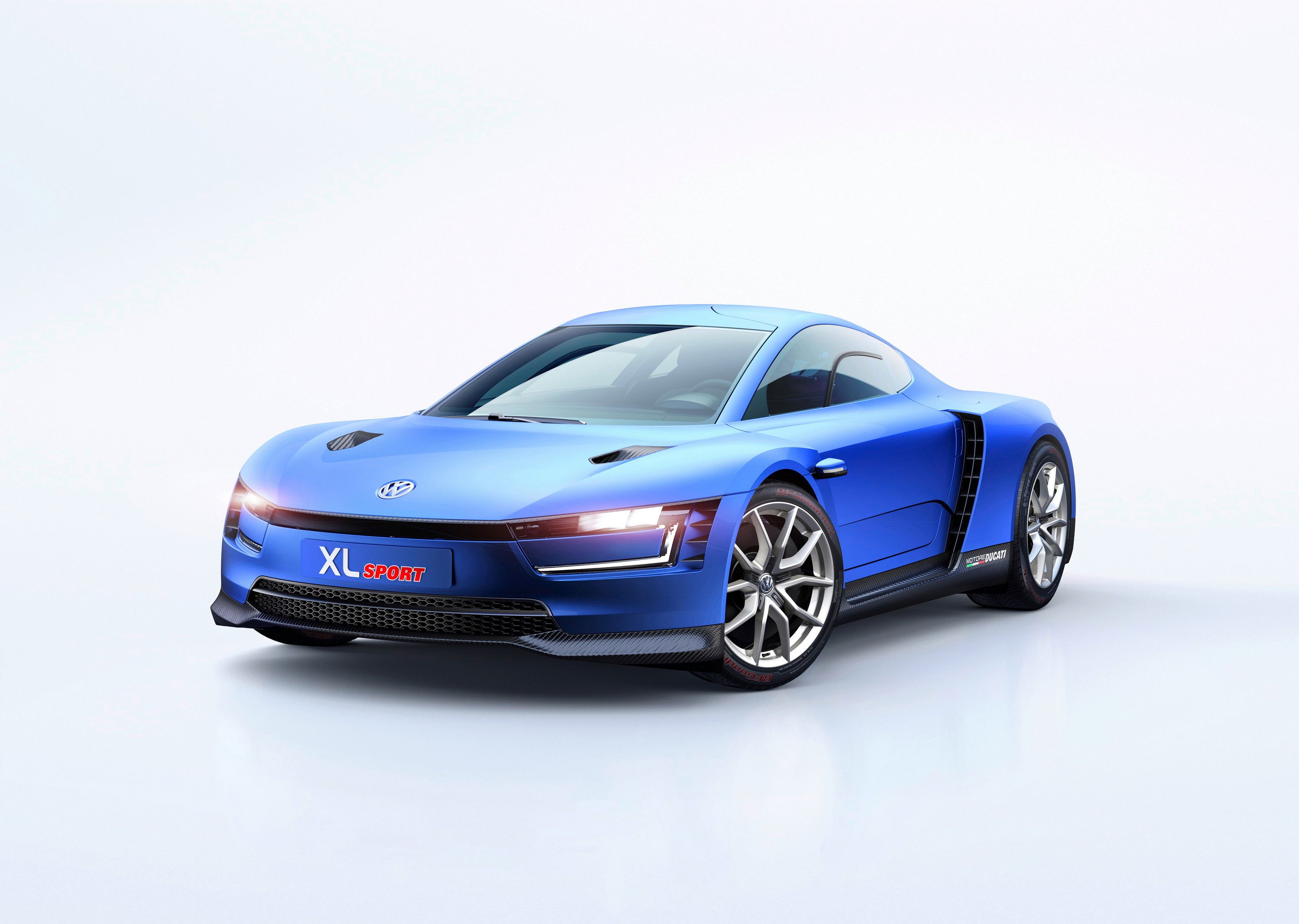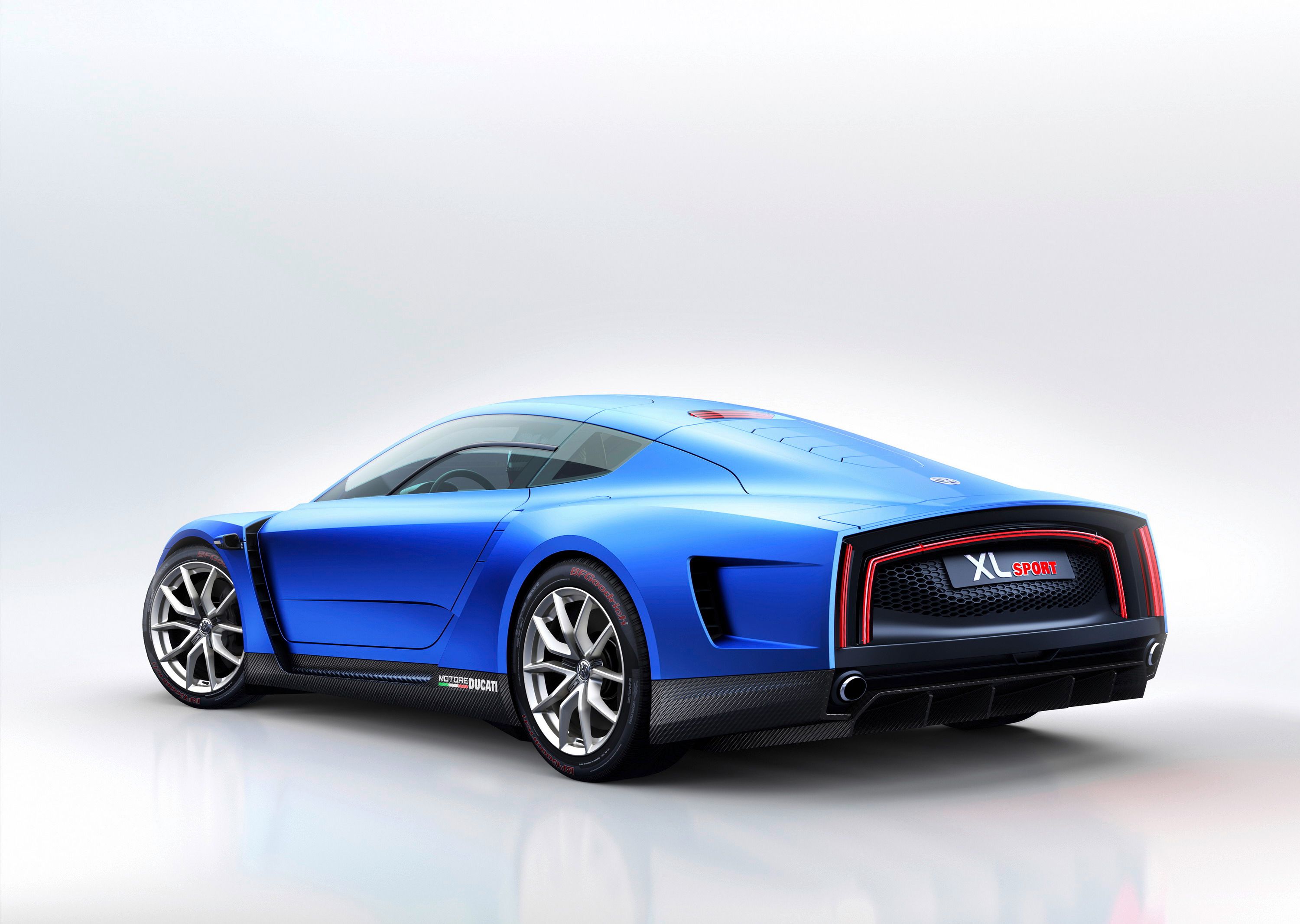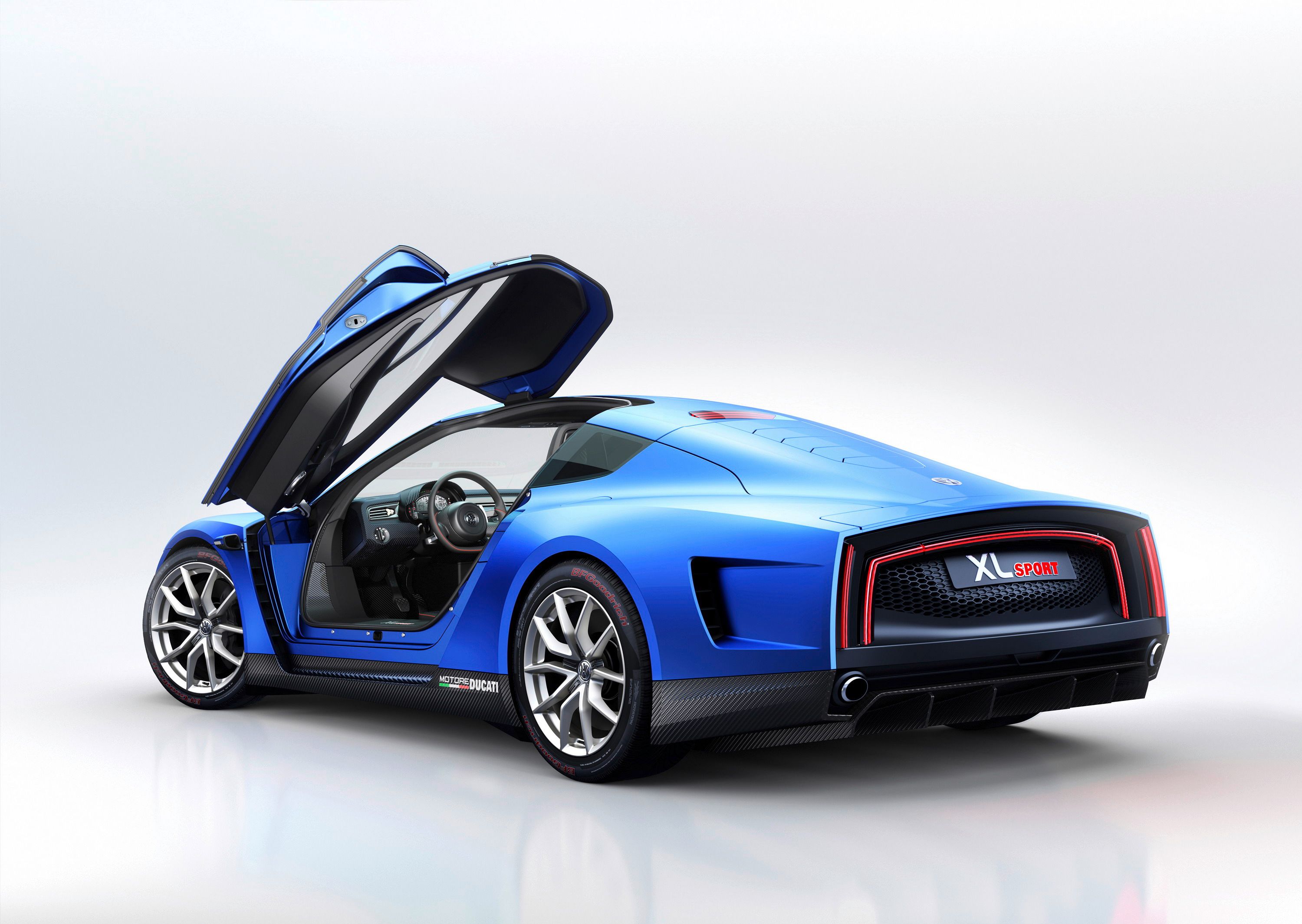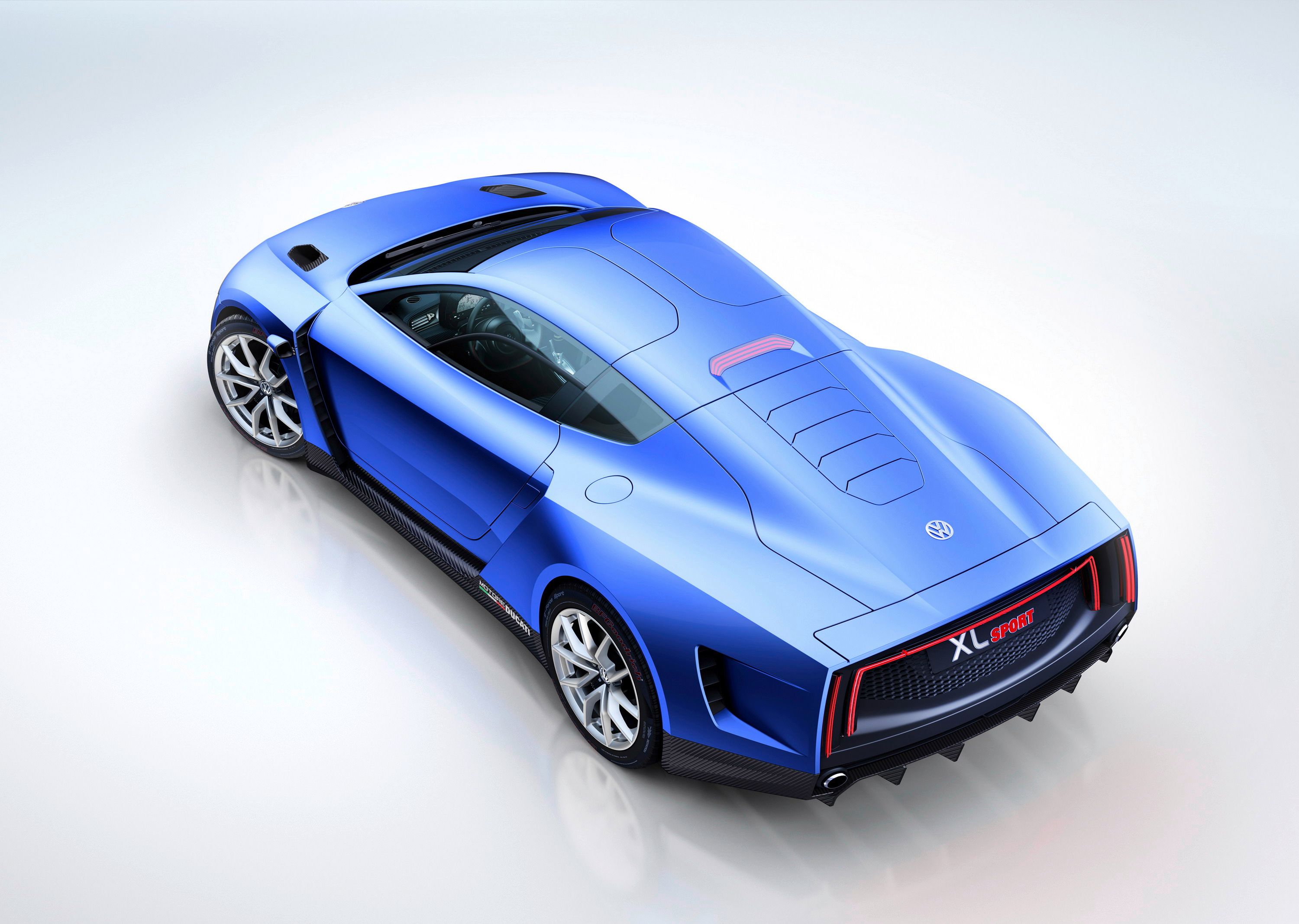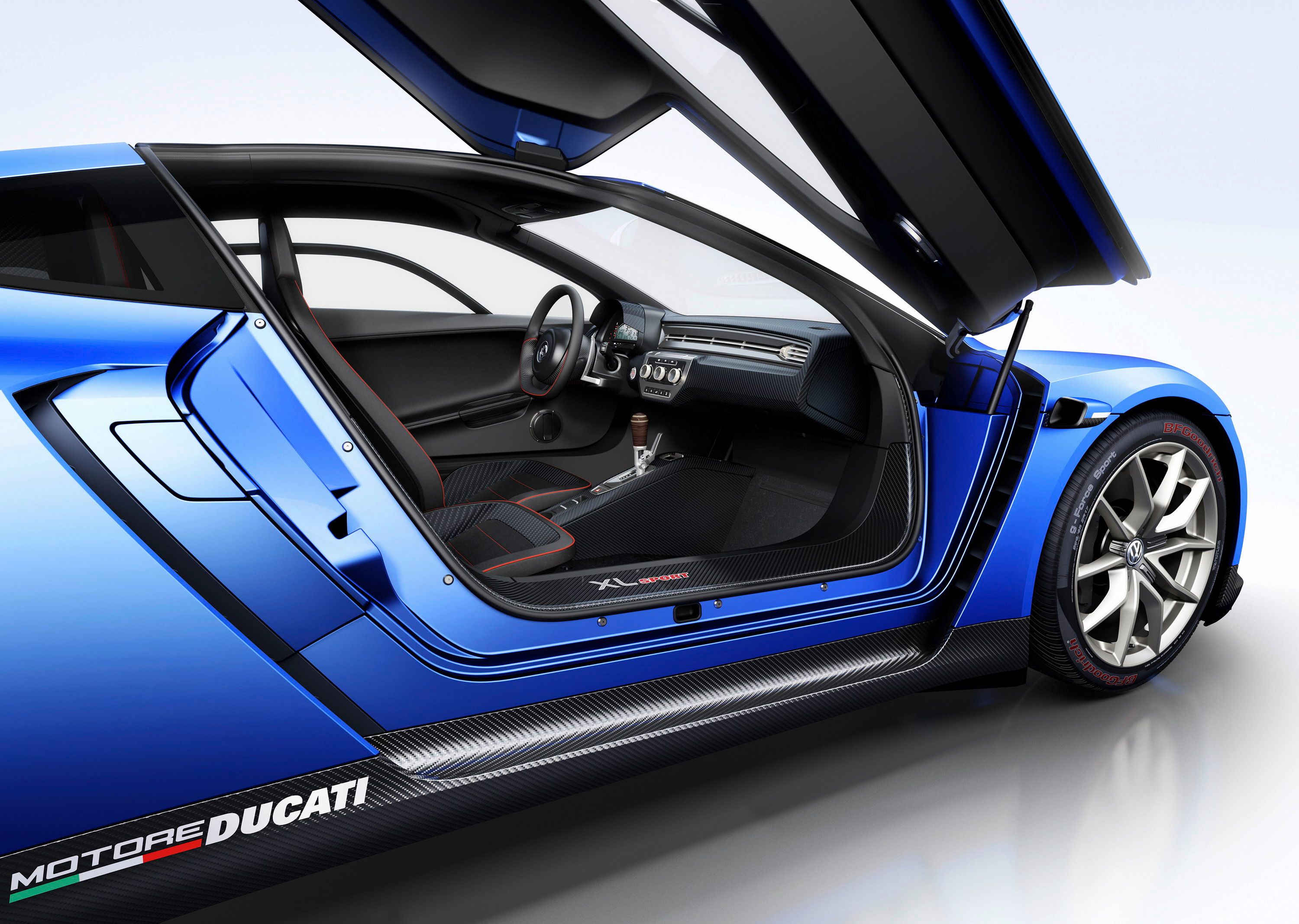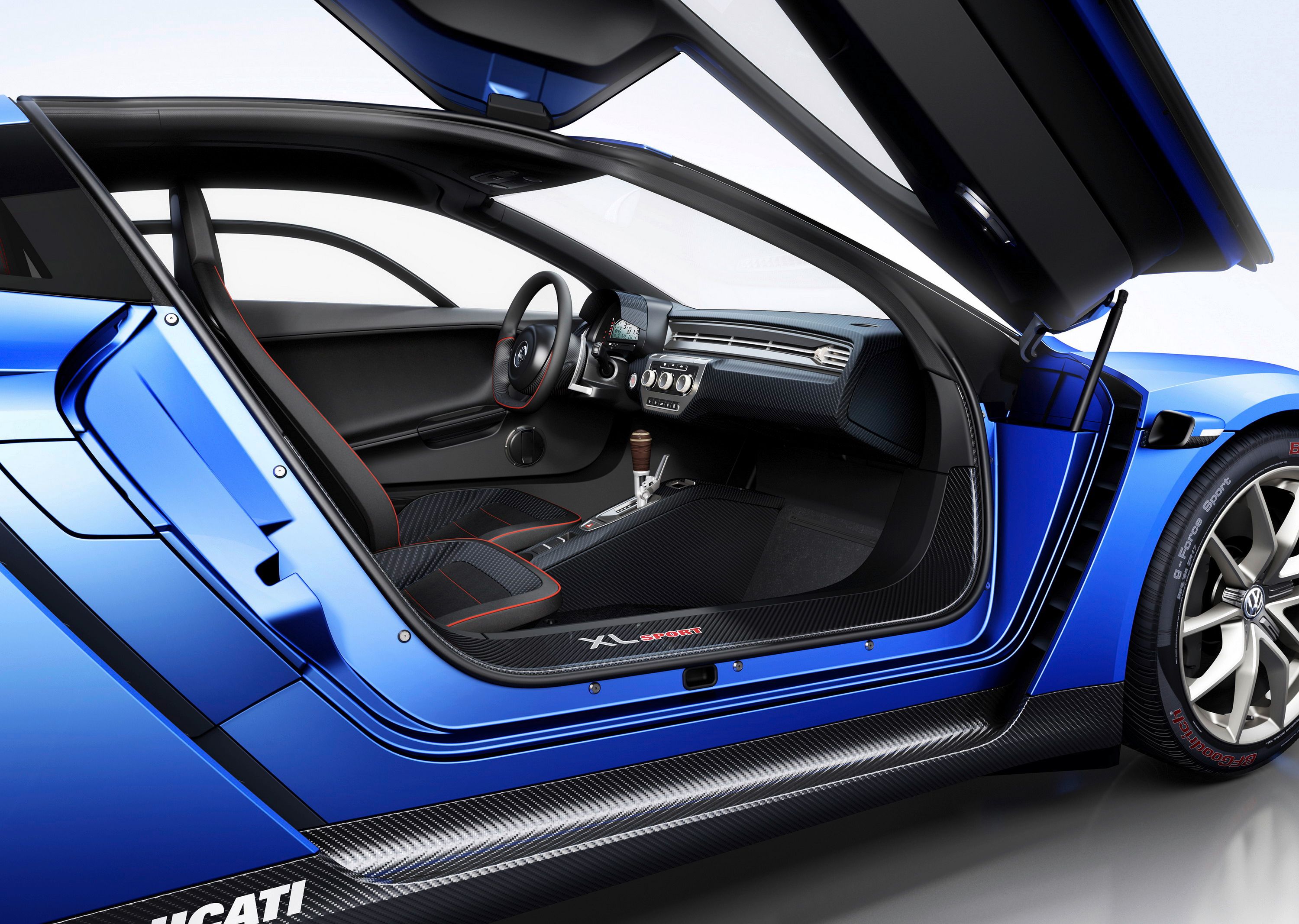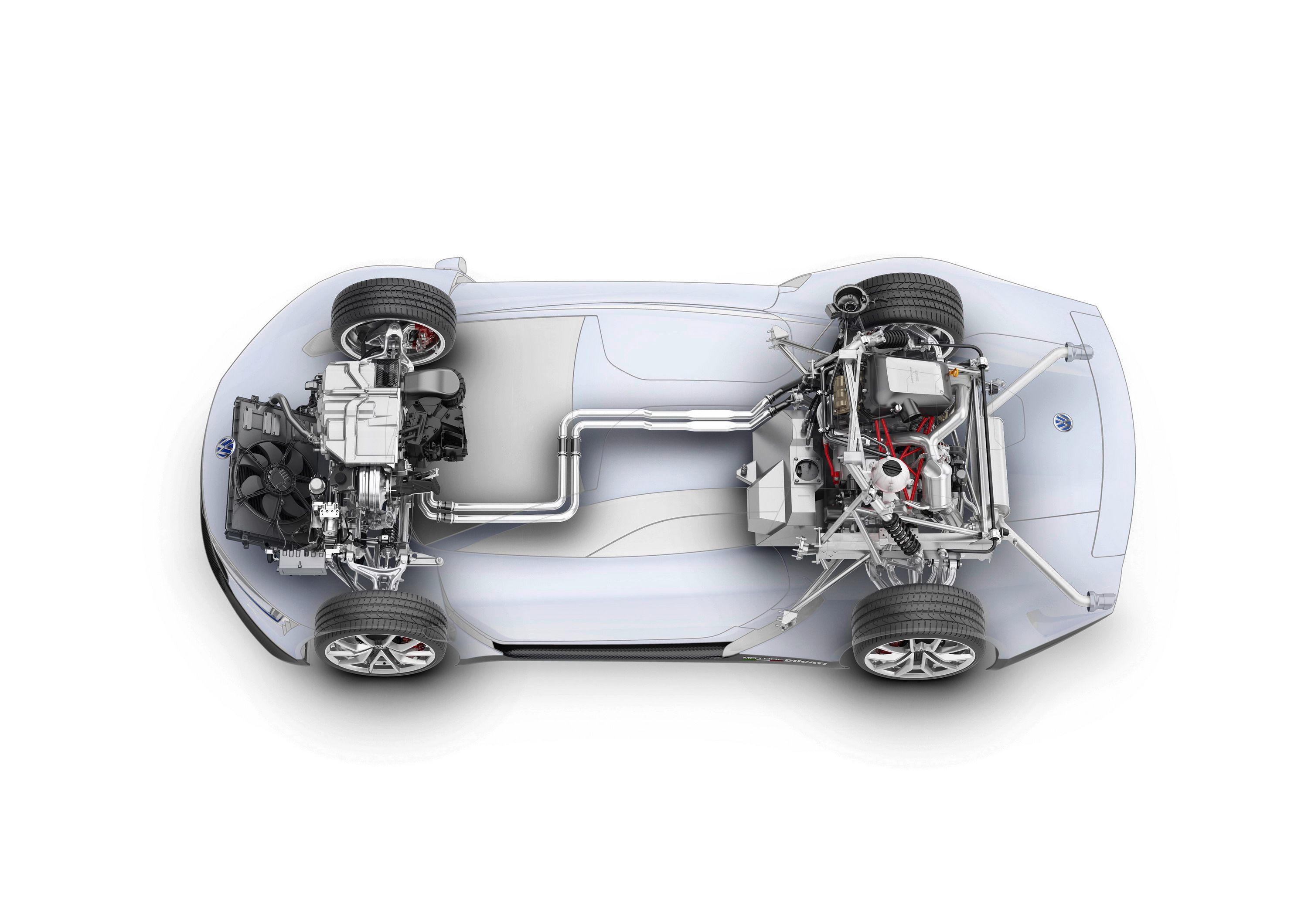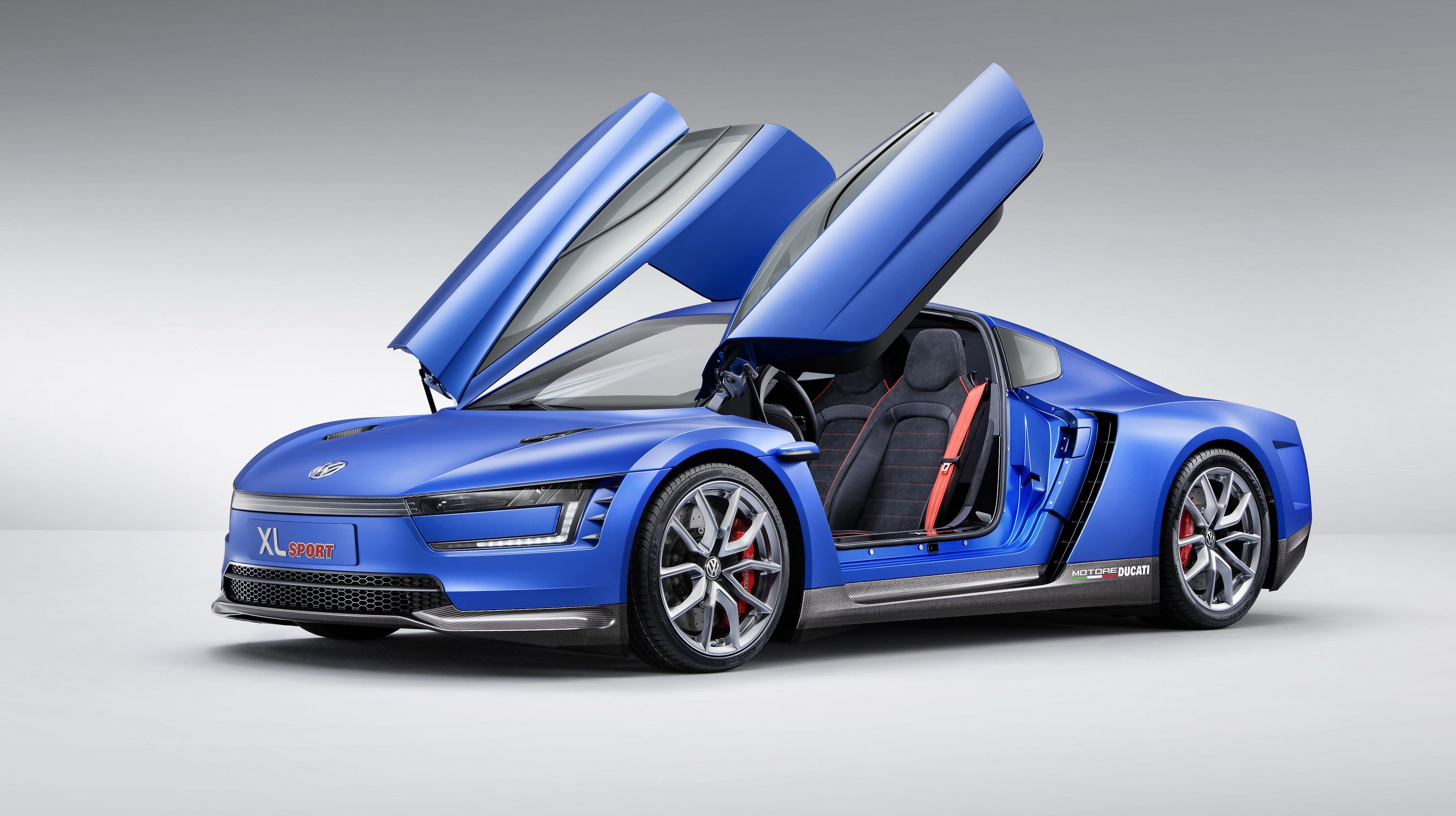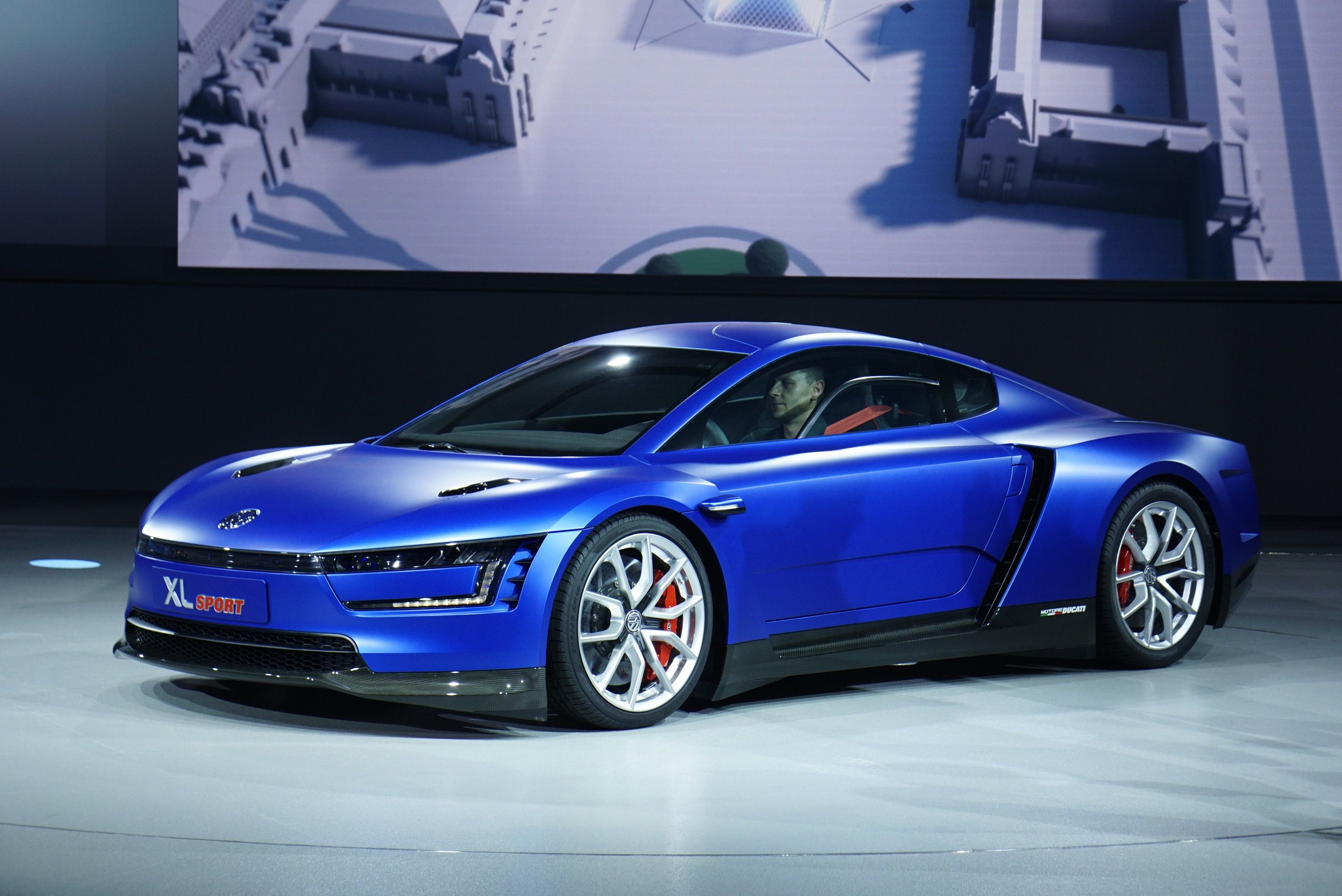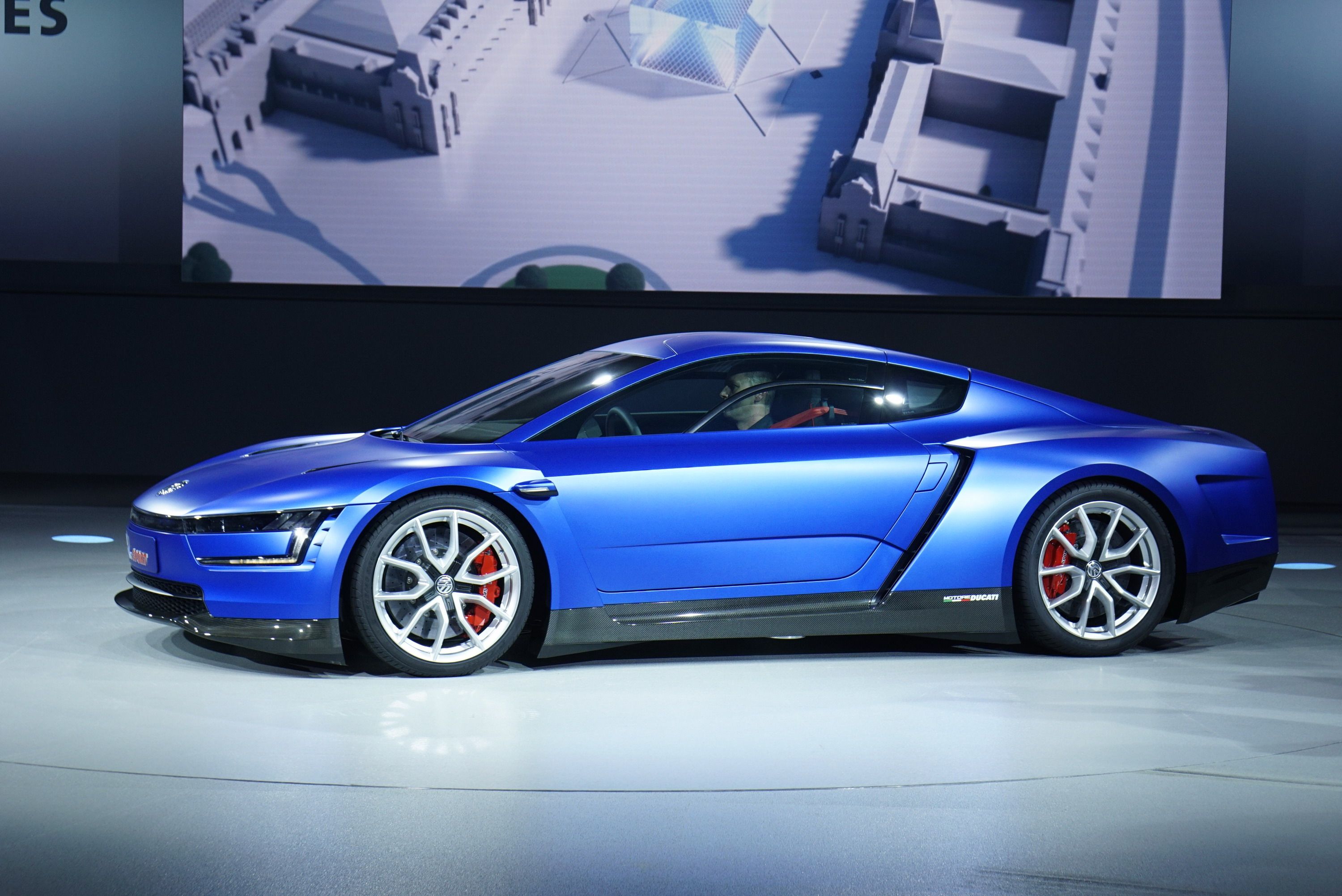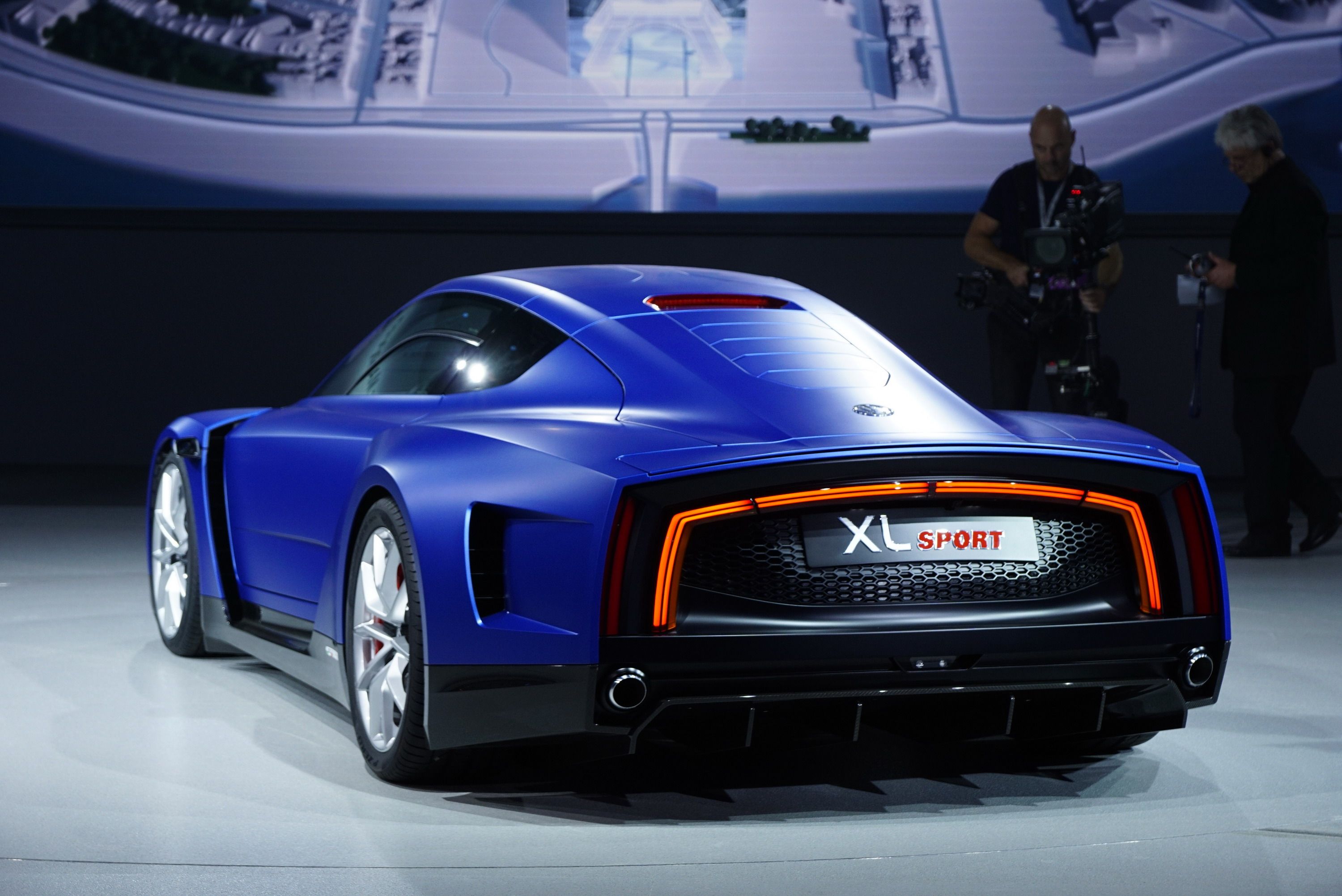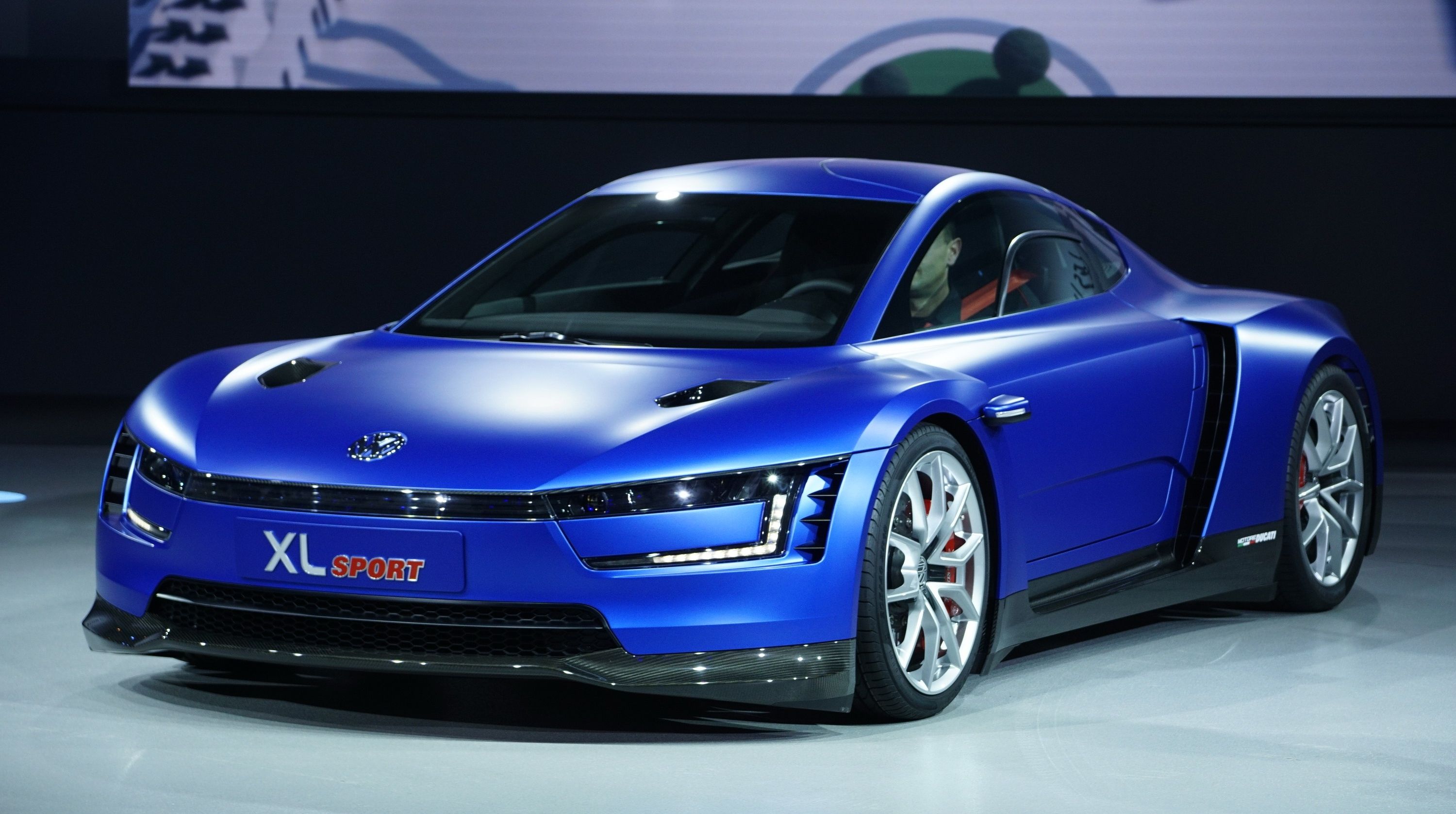The Volkswagen XL1 was born out of the company's desire to build an ultra-efficient vehicle to be able to travel 100 km on only one liter of diesel fuel or around 240 U.S. mpg. The first concept->ke169 was shown to the world in 2002, with an improved model, dubbed L1, showcased in 2009. The study gained the XL1 shape we're all familiar with in 2011 as a diesel plug-in hybrid->ke147 prototype. An updated production version rolled out in early 2012, when Volkswagen announced a limited-edition car will be built starting 2013. The XL1 is propelled by a 0.8-liter, two-cylinder TDI engine rated at 48 horsepower and an electric motor generating 27 ponies. The XL1 is expected to achieve a fuel economy of 260 mpg using both units, and return 120 mpg on diesel fuel alone. The all-electric range sits at 31 miles. As the 250 units slated to hit public roads are still being assembled as of October 2014, the company has developed a brand-new iteration of the XL1, named XL Sport.
As suggested by its name, the new vehicle is a sportier version of the XL1. Unlike the latter, the XL Sport runs on gasoline and uses a Ducati->ke622 motorcycle engine. Although it shares most of its body and interior with the XL1, the XL Sport features a racing-inspired body, rides on a motorsport-tuned chassis and comes with a handful of carbon-fiber body parts. Showcased at the 2014 Paris Motor Show, the XL Sport is nothing more than a concept that celebrates the 200 million vehicles assembled by Volkswagen->ke94 as of October 2014.
Updated 10/01/2014: The long-rumored XL Sport finally made its world debut at the 2014 Paris Auto Show. Details after the jump.
Click past the jump to read more about the standard Volkswagen XL1.
2015 Volkswagen XL Sport
- Make: Array
- Model: 2015 Volkswagen XL Sport
- Engine/Motor: V-Twin
- Horsepower: 197 @ 11000
- Torque: 98
- Transmission: 7-speed DSG
- [do not use] Vehicle Model: Array
Exterior
The differences between the two are even bigger around back. The XL Sport's rear end seems redesigned almost from the ground up, with only the taillights hinting that its design is based on the XL1's. The fascia itself has been reconfigured to include a large, honeycomb grille, while VW moved the taillights away from the edges. Down below there's a carbon-fiber diffuser with four fins and two exhaust tips integrated near the sides. The rear end is rounded off by a brand-new hood, an adjustable wing and massive, motorsport-inspired side vents in the fenders.
Naturally, the XL Sport's entire structure is about lightweight materials, not just the wheels. Much like the XL1, the XL Sport has its entire body made from carbon-fiber-reinforced polymer (CFRP), while the lower body parts, including the front splitter, side skirts and rear diffuser, are crafted from carbon-fiber. The vehicle tips the scale at only 890 kg (1,962 pounds), making it a tad lighter than a Lotus Elise->ke1678.
Exterior Dimensions
|
Length |
4,291 MM (168.93 Inches) |
|
Width |
1,847 MM (72.71 Inches) |
|
Height |
1,152 MM (45.35 Inches) |
|
Wheelbase |
2,424 MM (95.43 Inches) |
|
Weight |
890 kg (1,962 LBS) |
Interior
Other highlights include anodized-aluminum accents around the air vents and the DSG shift gate. The shift paddles behind the steering wheel are also made from anodized aluminum. Rounding out the cabin red contrast stitching on the seats and the seat belts.
Drivetrain
It might not sound like a lot of oomph, but the low curb weight, the race-tuned chassis, and the quick-shifting DSG gearbox enable the XL Sport to sprint from naught to 62 mph in only 5.7 seconds. Top speed sits at 167 mph, which is a fair bit more than the typical 155-mph top speed of most high-performance German vehicles. The high top speed owes some thanks to the XL Sport's aerodynamic design and 0.258 drag coefficient.
Drivetrain/Specifications
|
Type |
V-2 |
|
Output |
197 HP @ 11,000 RPM |
|
Torque |
98 LB-FT |
|
Transmission |
7-speed dual clutch gearbox (DSG) |
|
0 -100 km/h (62 mph) |
5.7 seconds |
|
Top speed |
270 km/h (167.7 mph) |
Prices
While Volkswagen is planning on building 250 XL1 hybrids, there's no indication that the XL Sport will become a production vehicle. The Germans will most likely make a decision on that after gauging the public's reaction to the car at the 2014 Paris Motor Show. In the meantime, the XL Sport remains a unique sports car built to celebrate the 200 million vehicles produced by Volkswagen as of October 1st, 2014.
Competition
Lotus Elise S Cup
If the Volkswagen XL Sport should make it to production, it would have all the credentials to challenge lightweight sports like the Lotus Elise. Currently in its second generation, the Elise platform is rather old, but that didn't stop the British automaker from launching the S Cup. Essentially the road-legal version of the Cup R race car, the S Cup features a number of unique exterior enhancements, a race-spec interior and a drivetrain tweaked to deliver 217 horsepower and 184 pound-feet of torque.
All that oomph comes from the same Toyota-sourced, supercharged, 1.8-liter, four-cylinder powerplant and travels to the rear wheels through a six-speed, quick-shift manual gearbox. Although a tad heavier than the XL Sport at 2,054 pounds, the Elise S Cup is quick enough to complete the 0-to-60-mph sprint in less than five seconds. The Lotus' top speed sits at 140 mph. The vehicle retails from €47,500, which is around $59,940 as of 10/02/2014.
Conclusion
The XL1 is arguably the most exciting concept car Volkswagen has built since the W12 supercar. Sure, it's not the kind of vehicle that would establish new speed records, but it comes with a futuristic and practical design, tons of technology, outstanding fuel economy, and low CO2 emissions. With the XL Sport, Volkswagen took nearly everything but the fuel-efficient drivetrain of the XL1, and created a vehicle that fills the all-important sports car gap in its lineup. More importantly, VW is also out to prove that you don't necessarily need six or eight cylinders to build a high-performance car, although this statement needs to be backed by a production version of the XL Sport.
All told, the XL Sport is a unique appearance in today's automotive market, one that says a lot about the effort VW is putting into developing innovative drivetrain solutions. Powered by a motorcycle engine or not, the XL Sport needs to become a production car that can tackle both the road and track. It has huge potential as a limited-edition model, and Volkswagen could use it to finally join the sports car wars.


